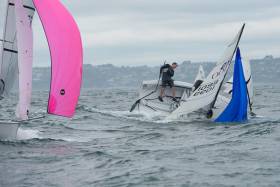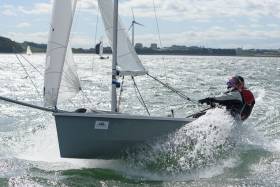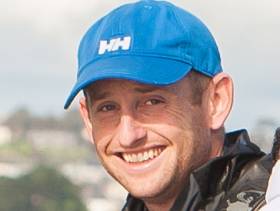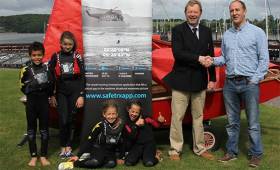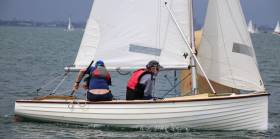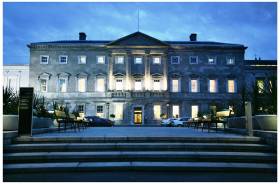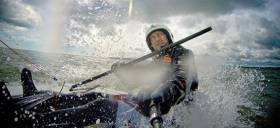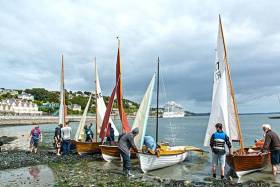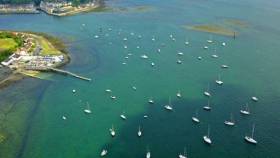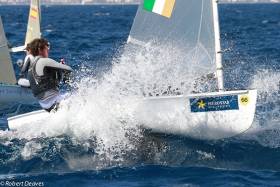Displaying items by tag: Dinghy
Royal Cork Dinghy Fest Day Two: Photo Gallery
Another day of big breeze for the centreboard classes competing at Royal Cork's DinghyFest 2017 that has attracted over 100 dinghies from foiling Moths to RS 200s, 400s as well as National 18s and 420s.
Photographer Bob Bateman was afloat in Cork Harbour to capture all the action
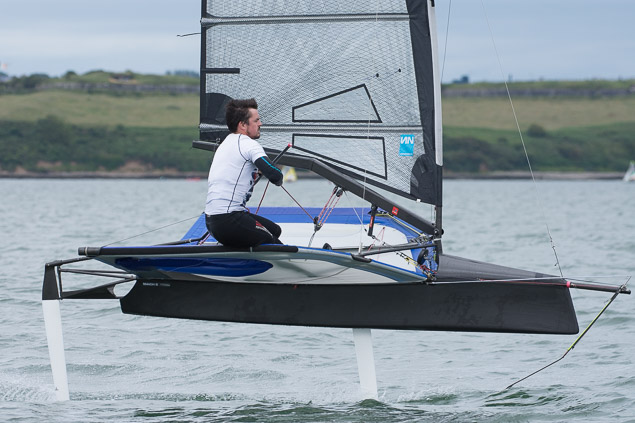
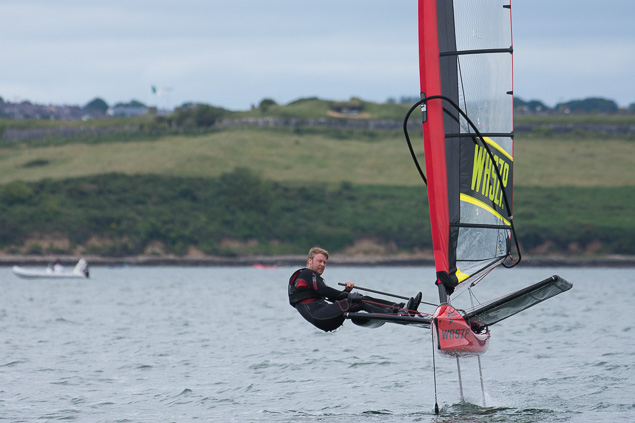
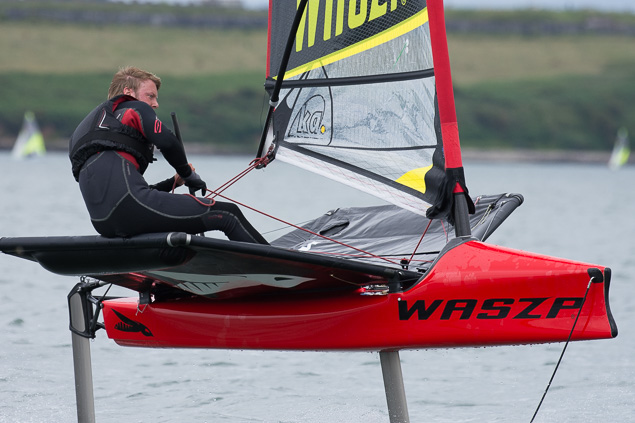
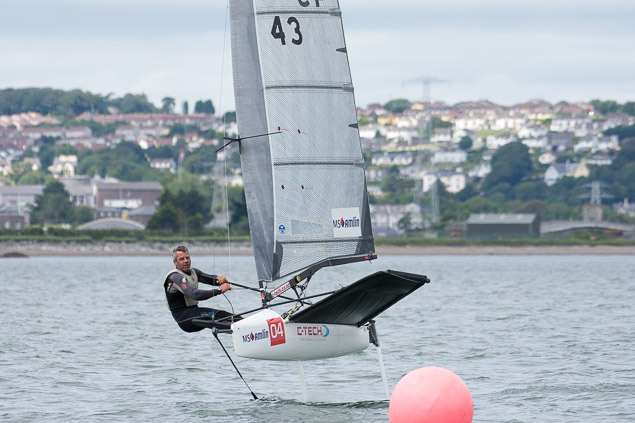
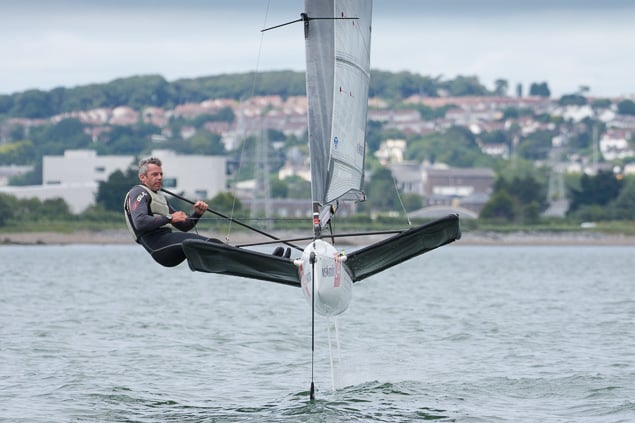
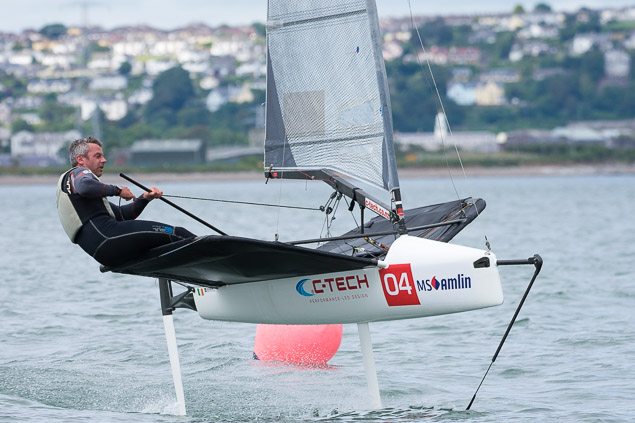
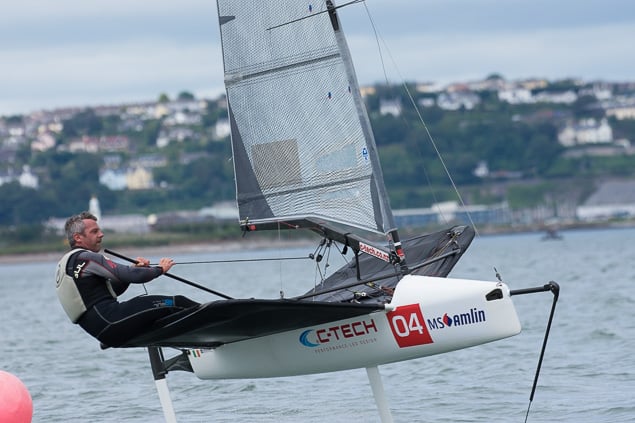
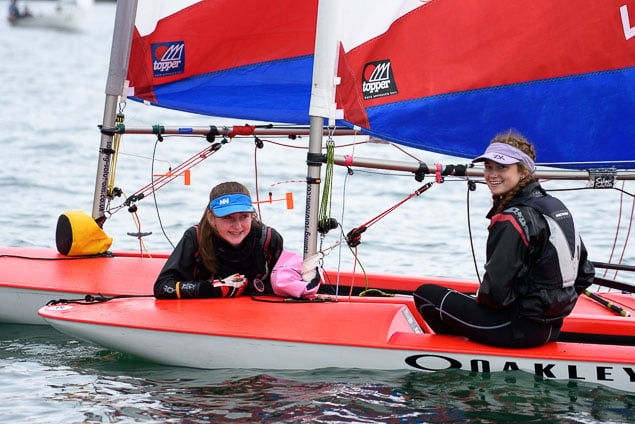
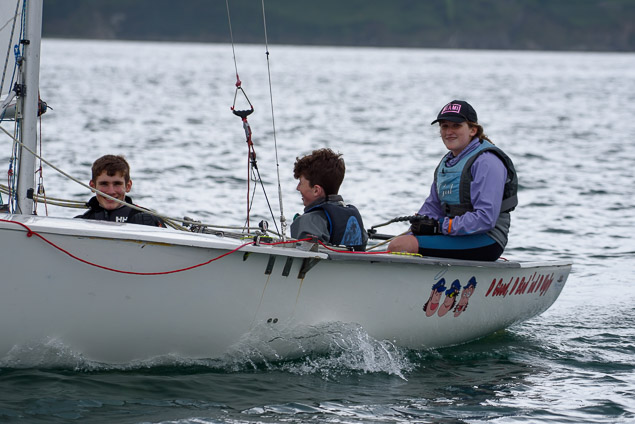
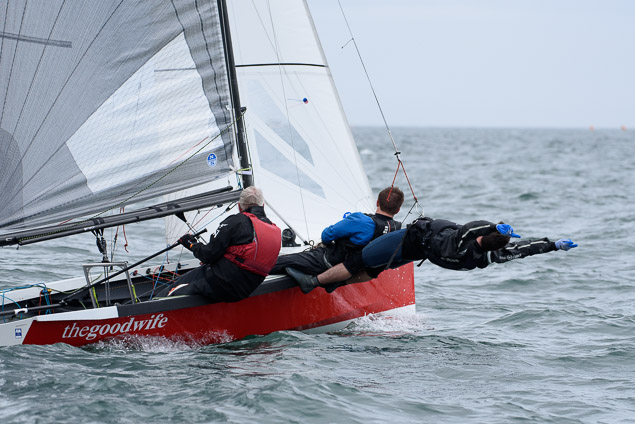
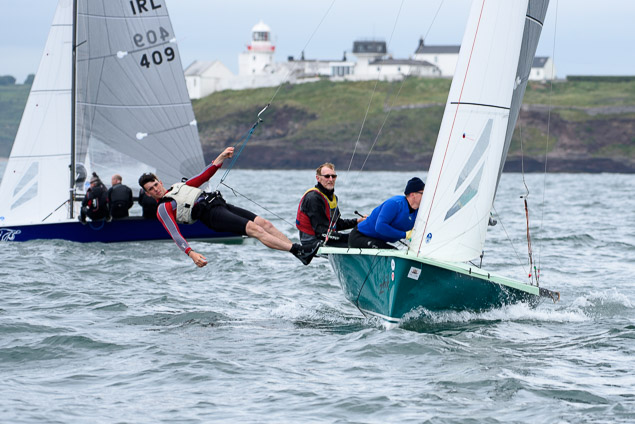
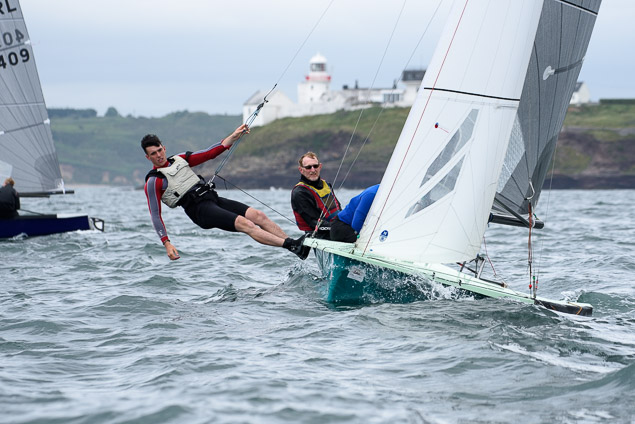
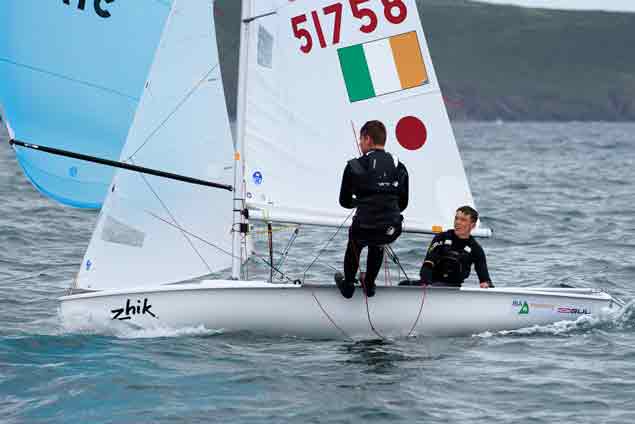
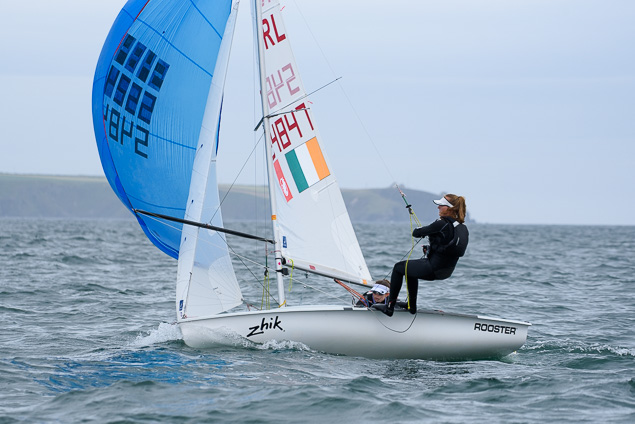
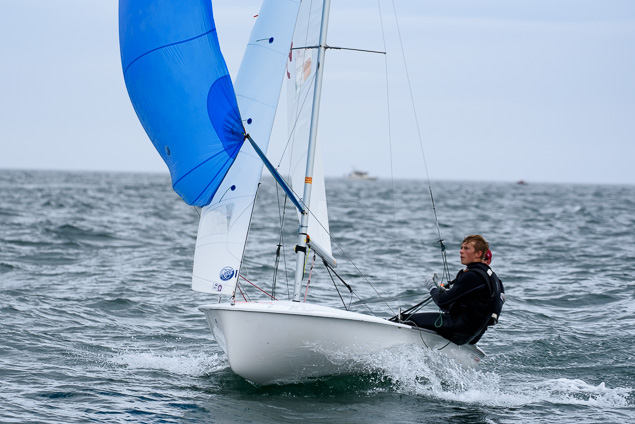
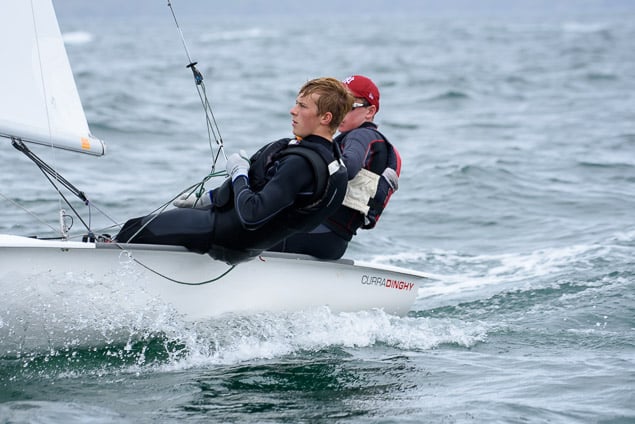
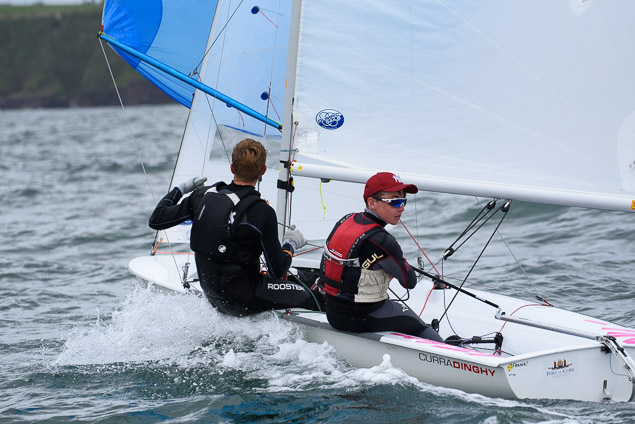
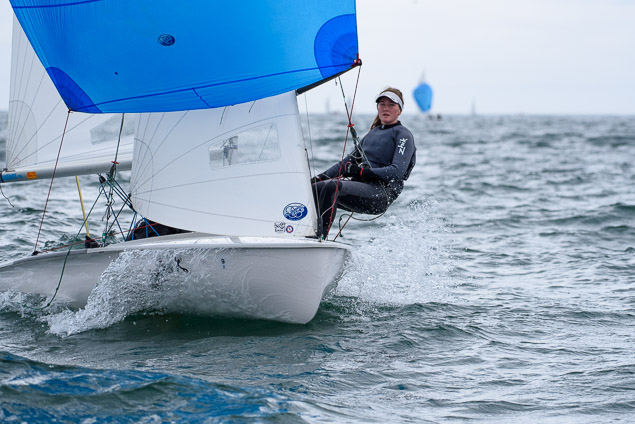
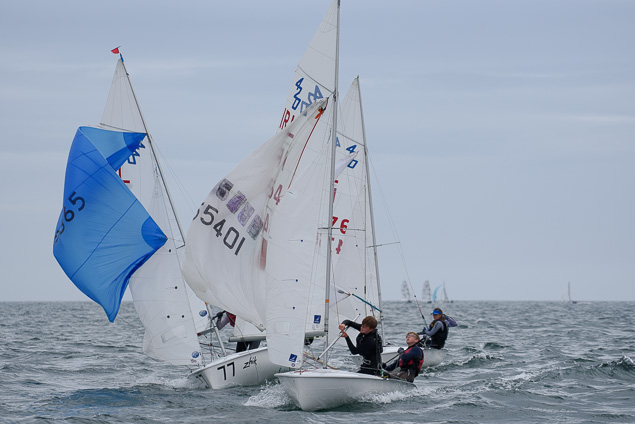
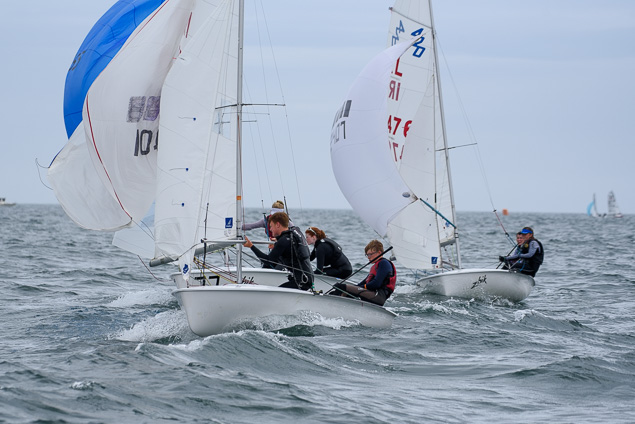
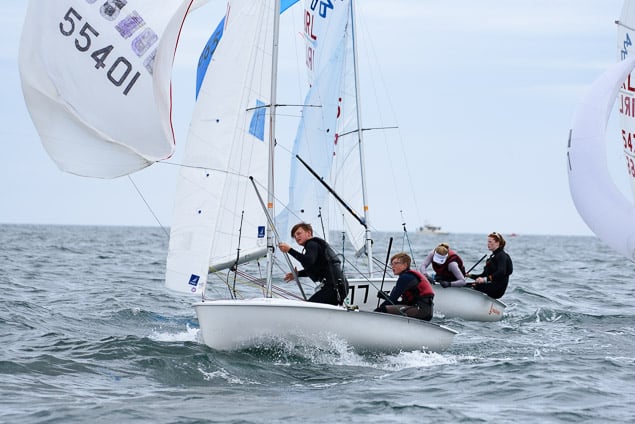
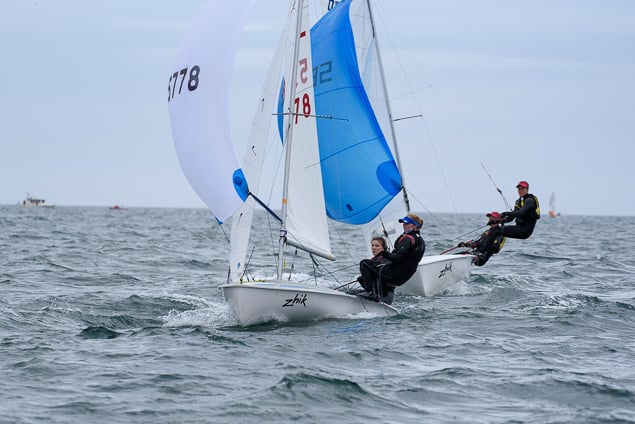
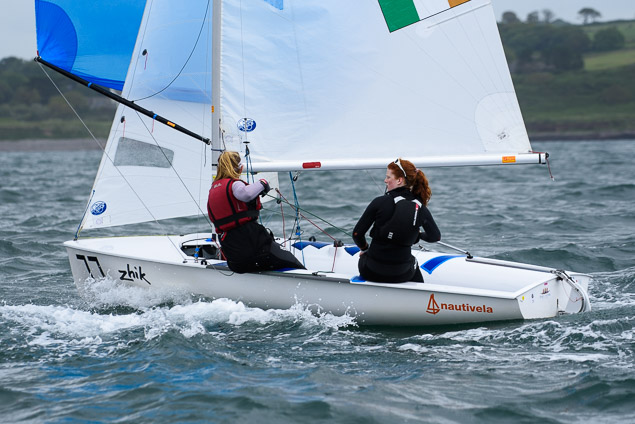
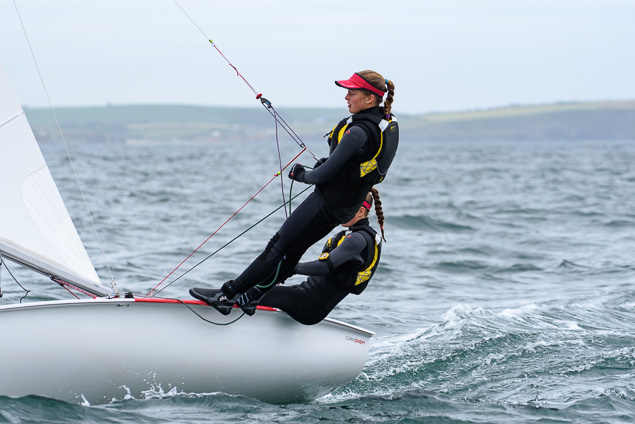
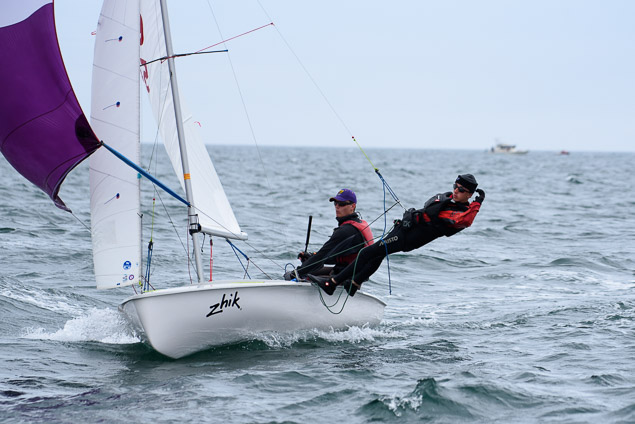
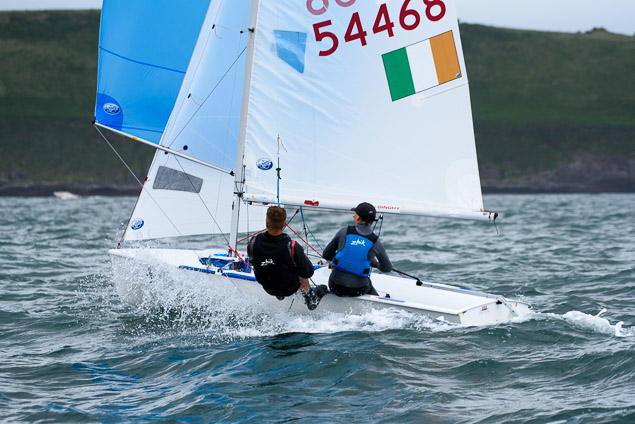
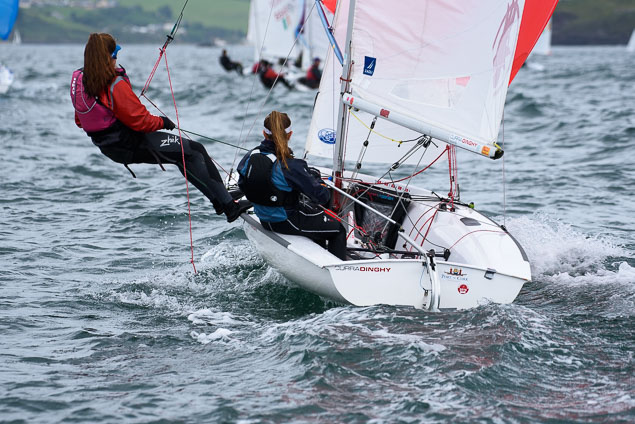
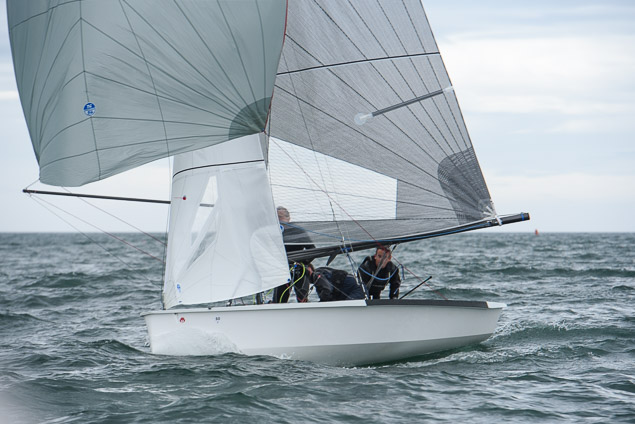
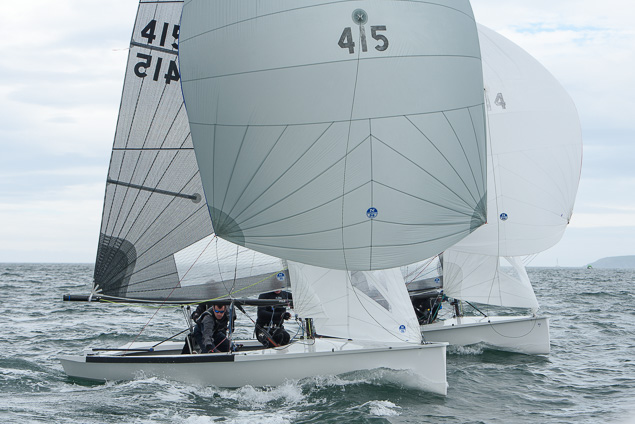
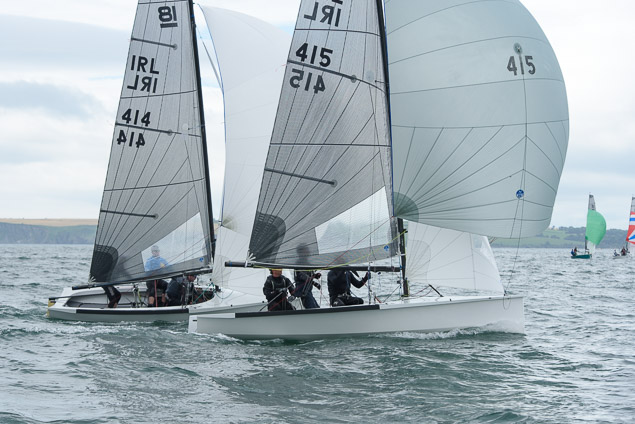
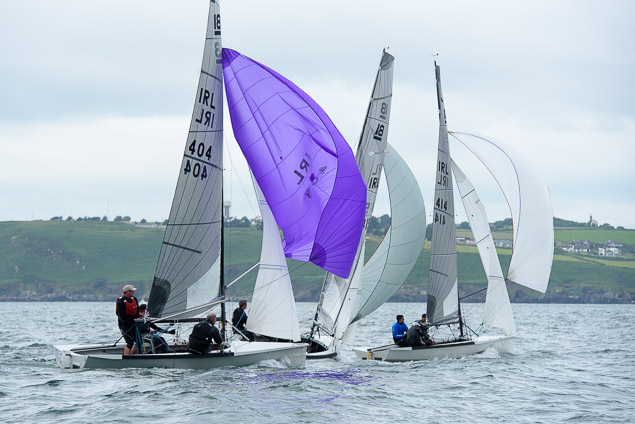
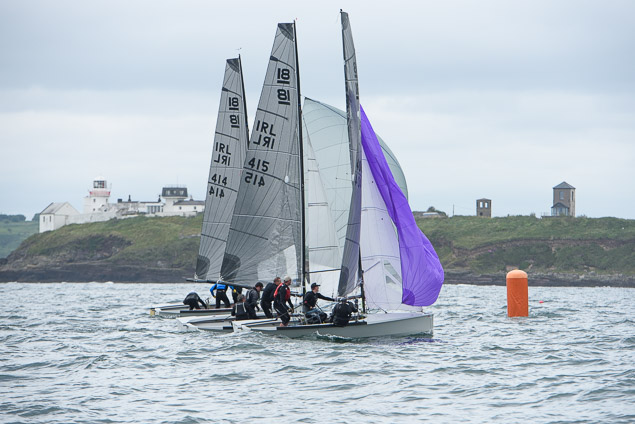
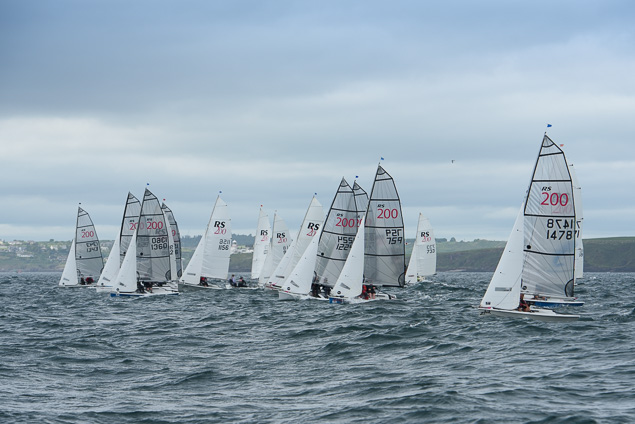
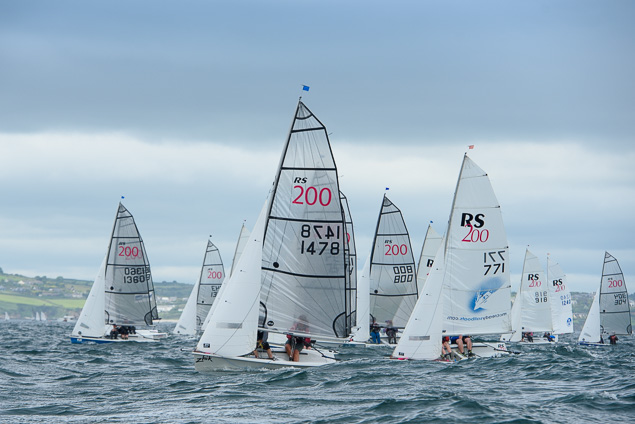
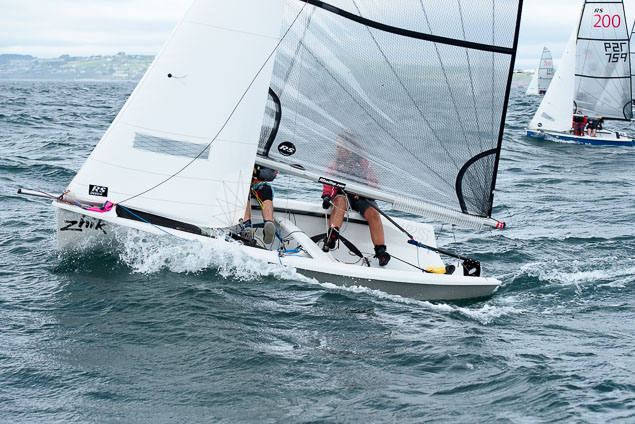
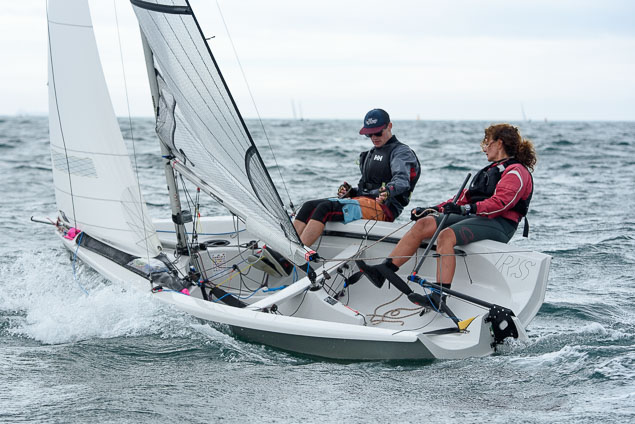
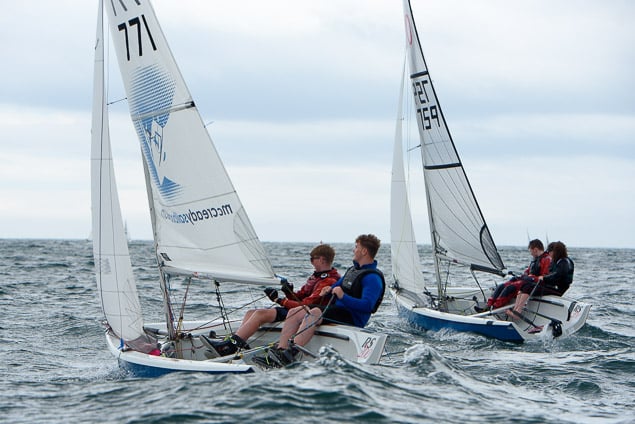
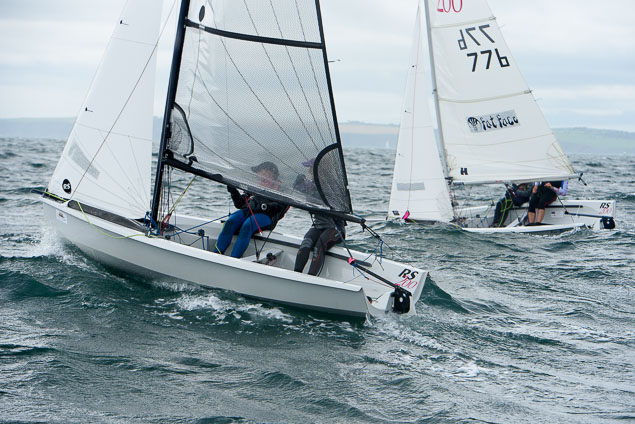
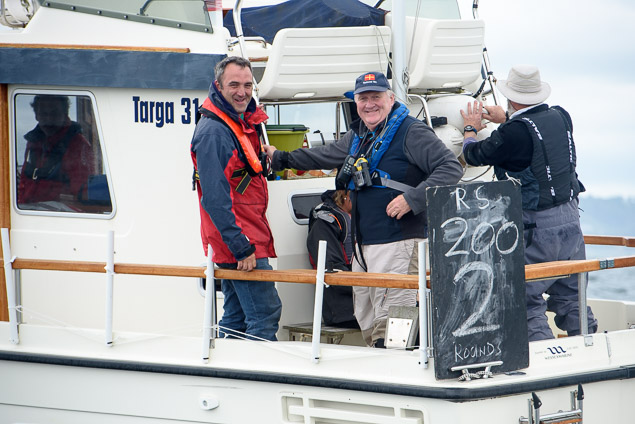
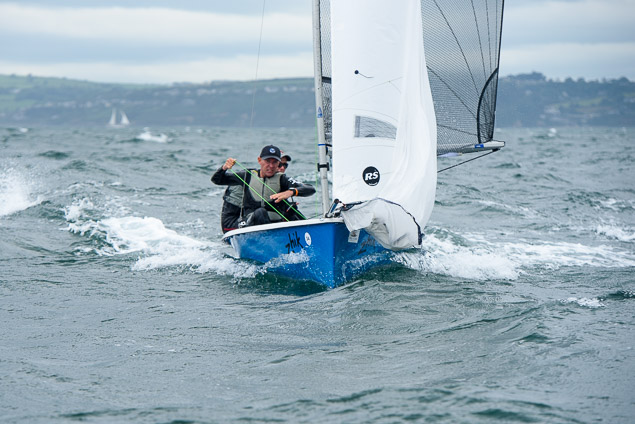
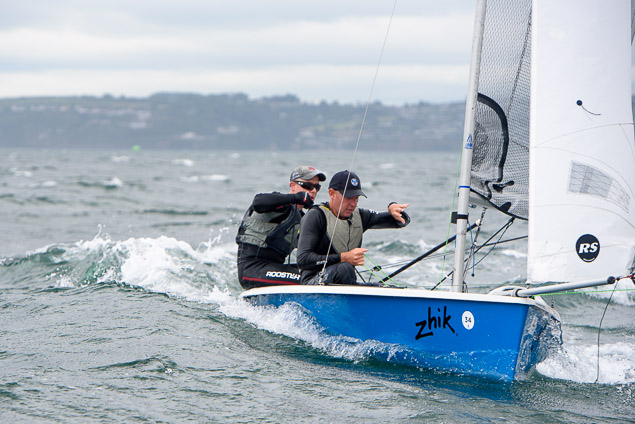
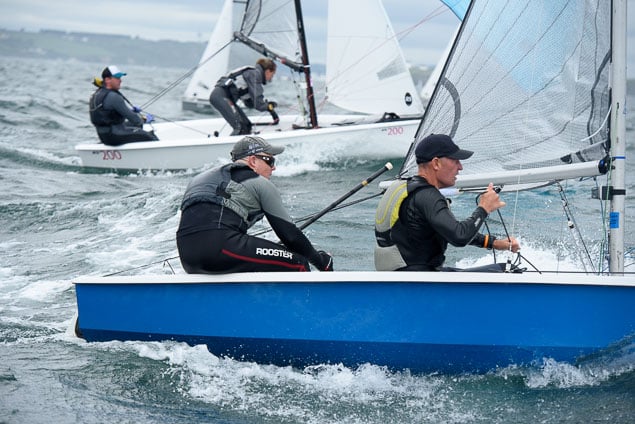
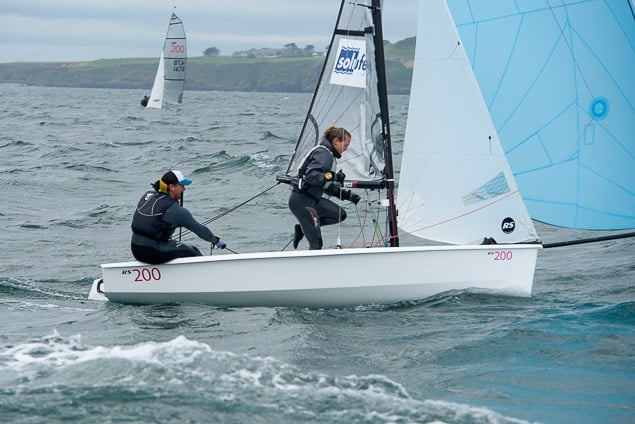
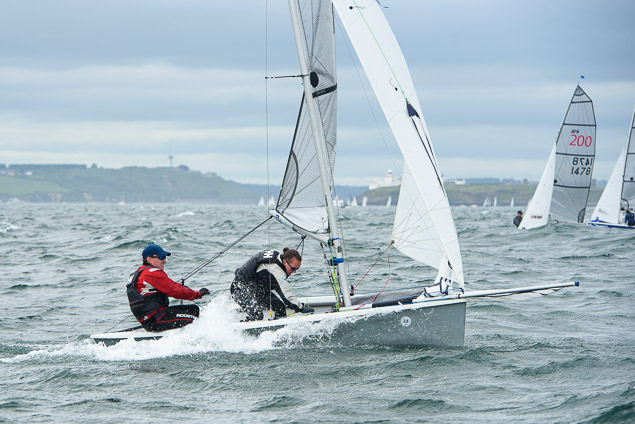
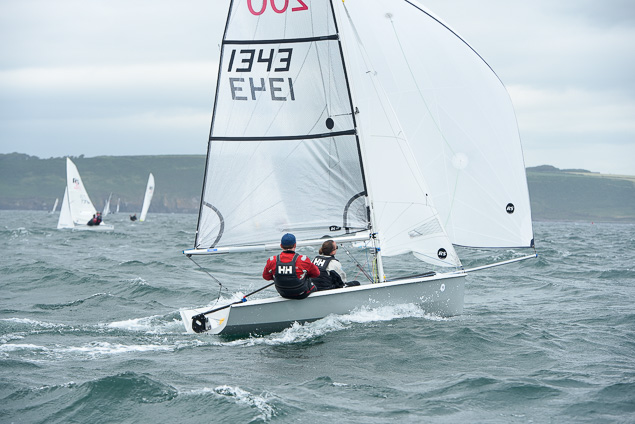
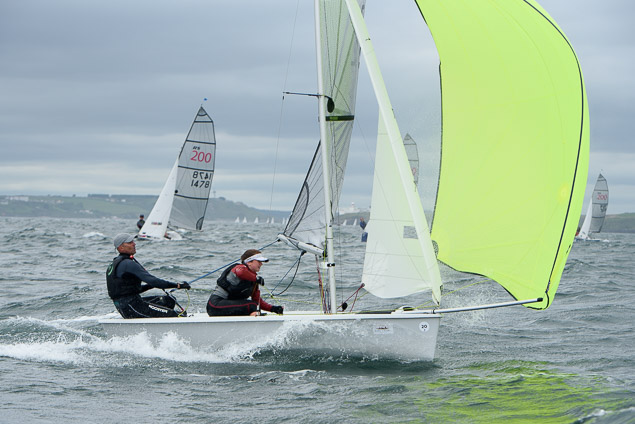
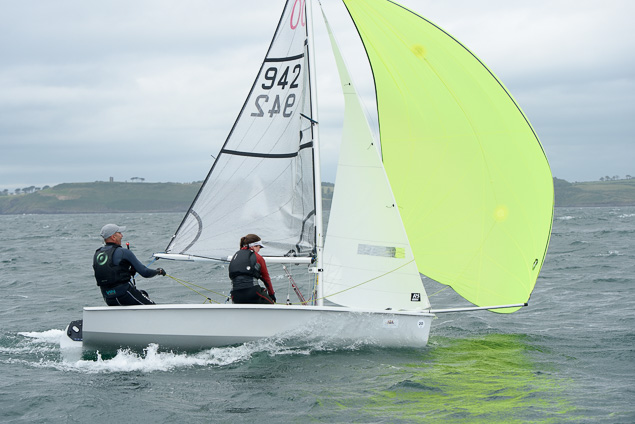
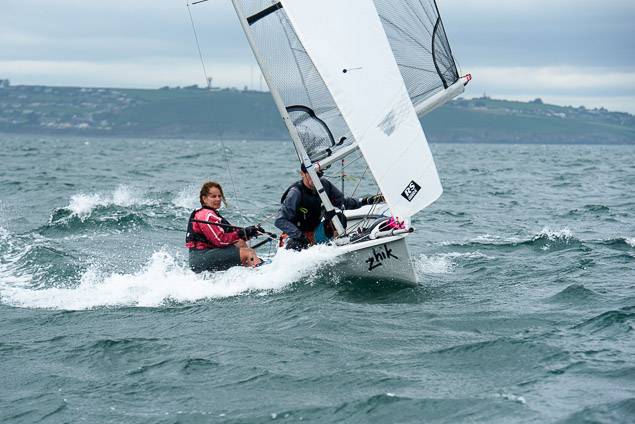
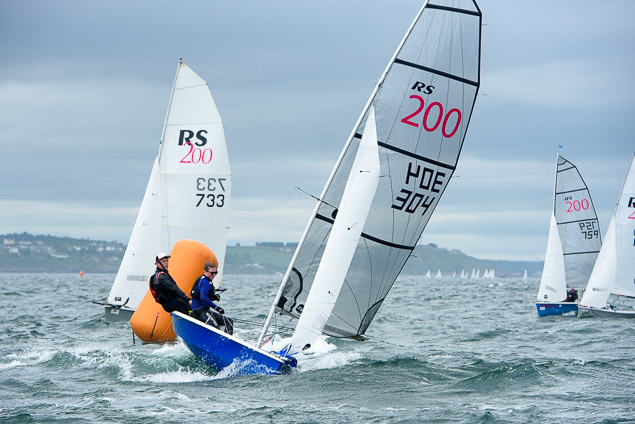
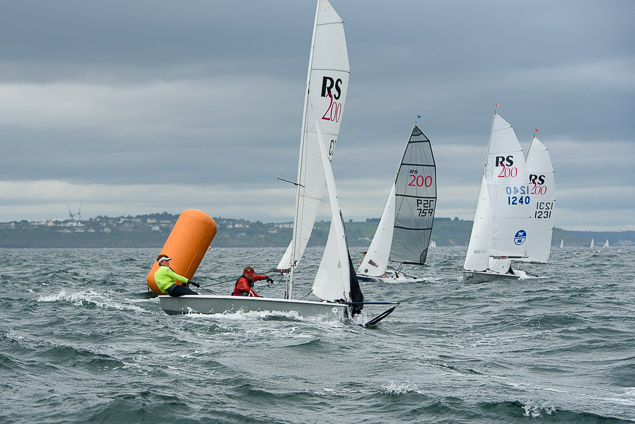
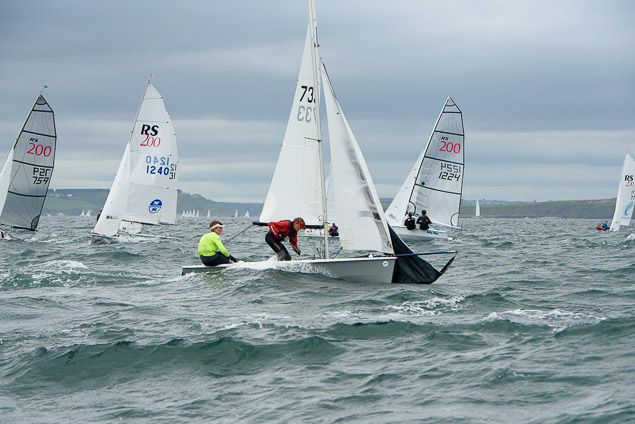
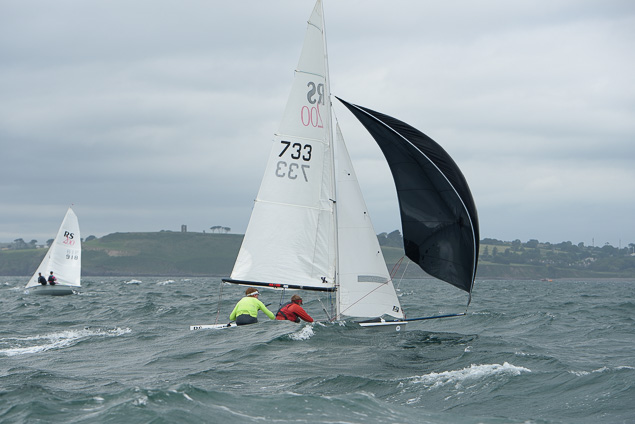
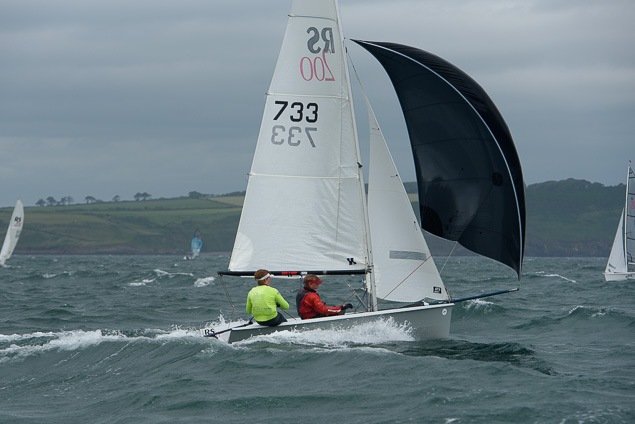
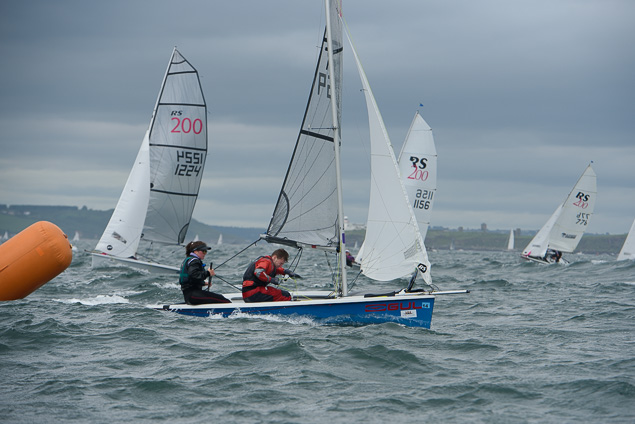
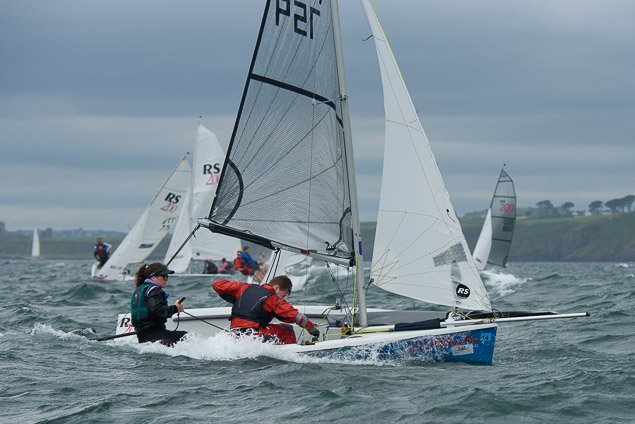
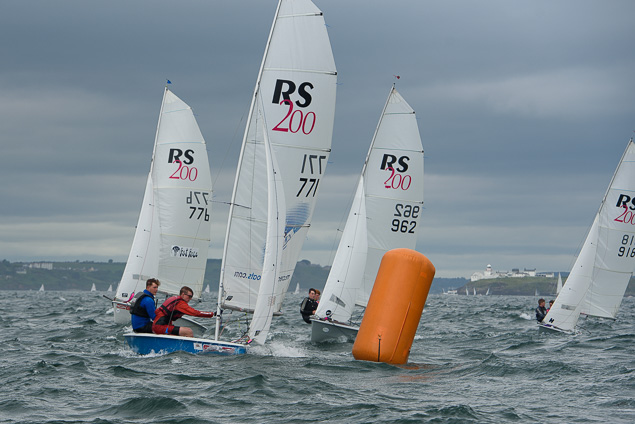
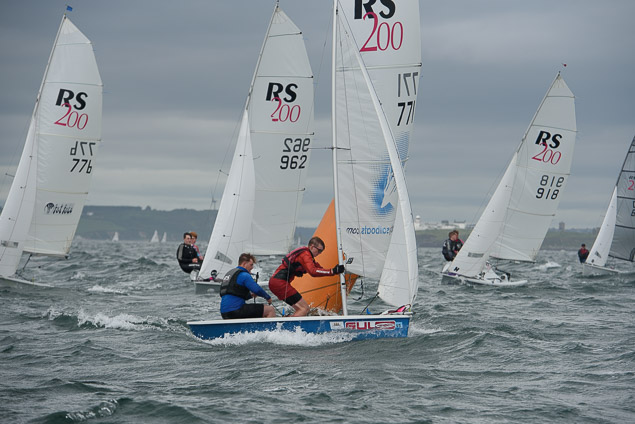
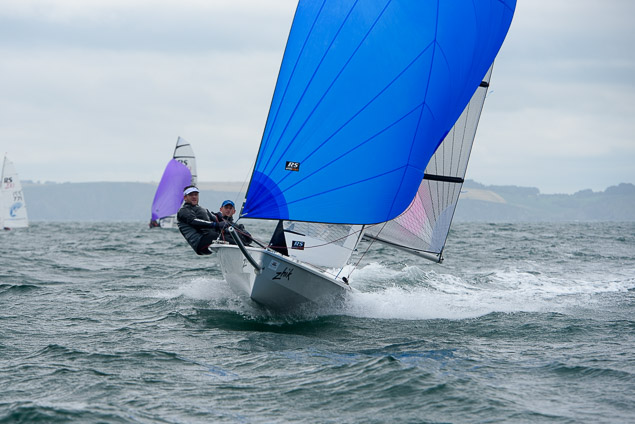
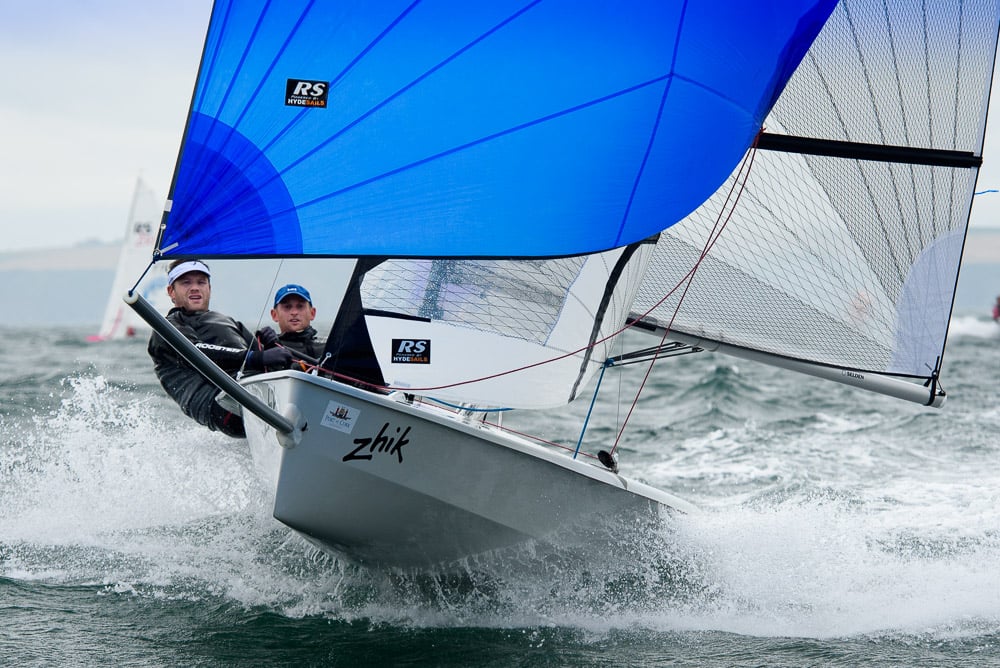
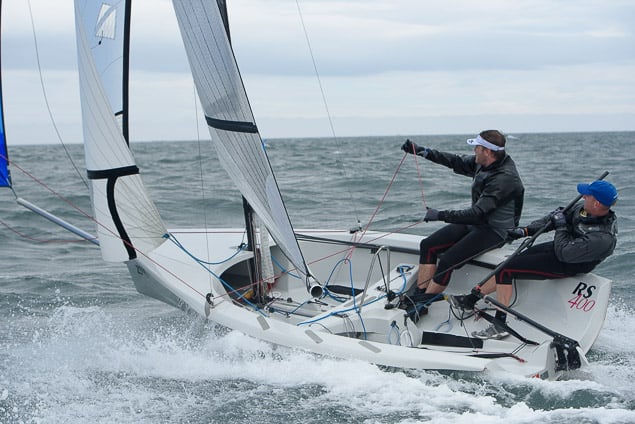
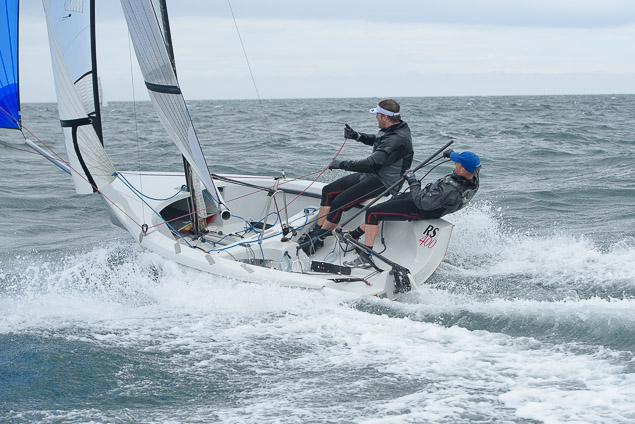
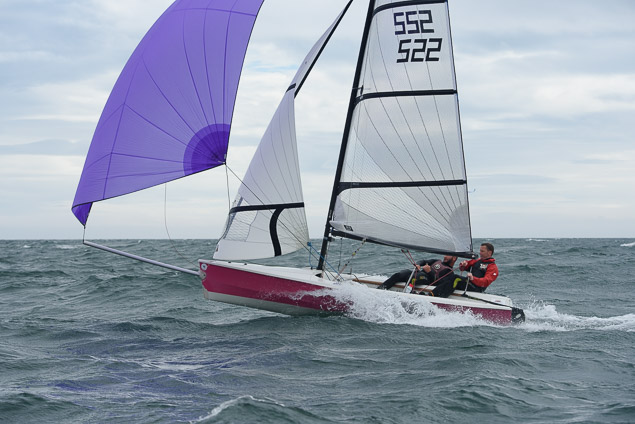
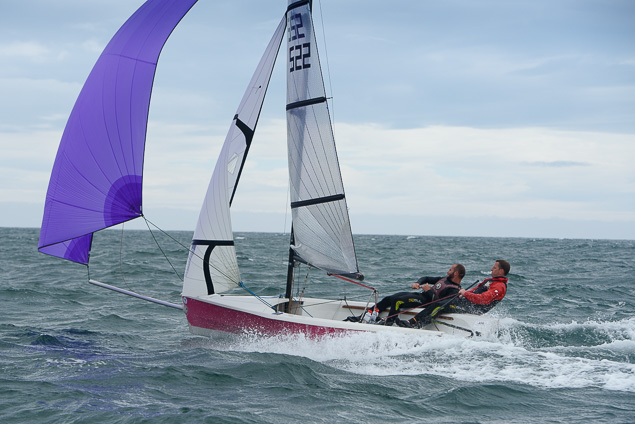
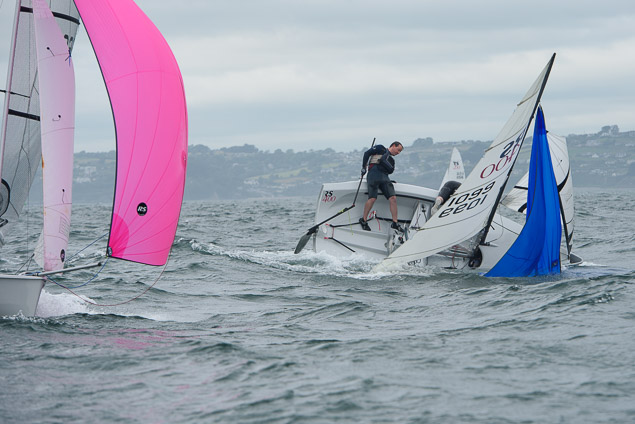
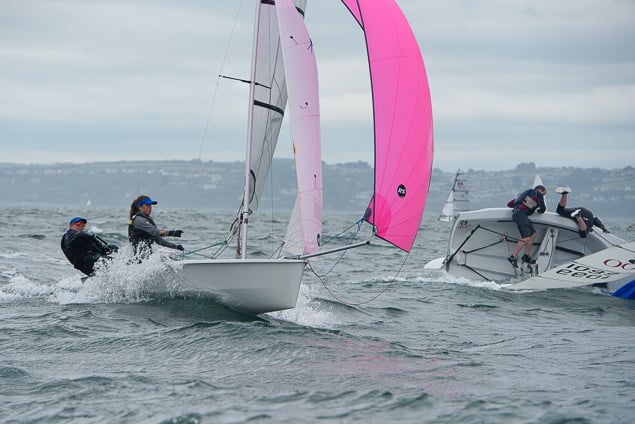
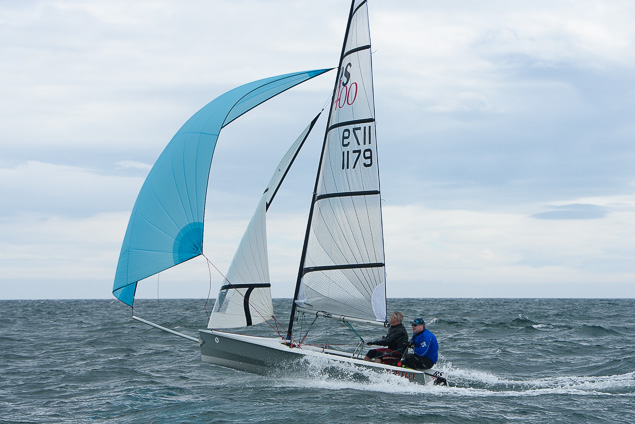
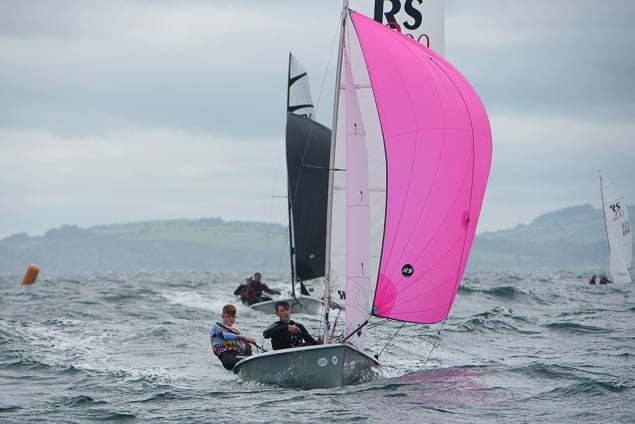
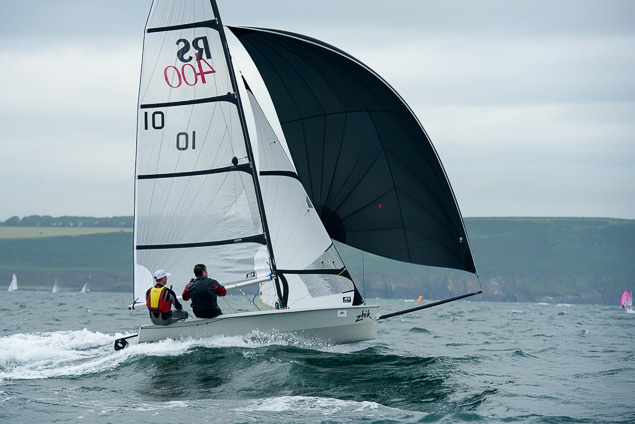
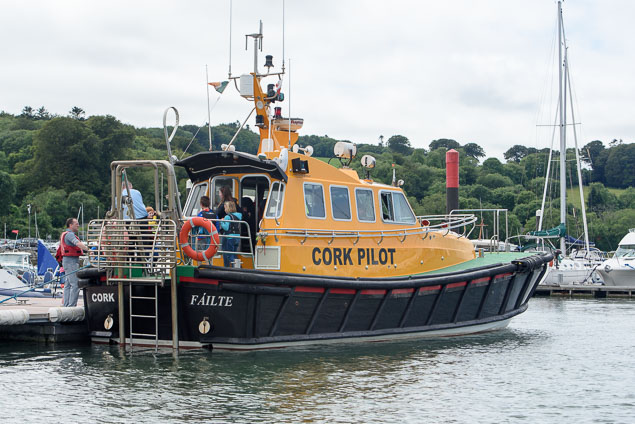
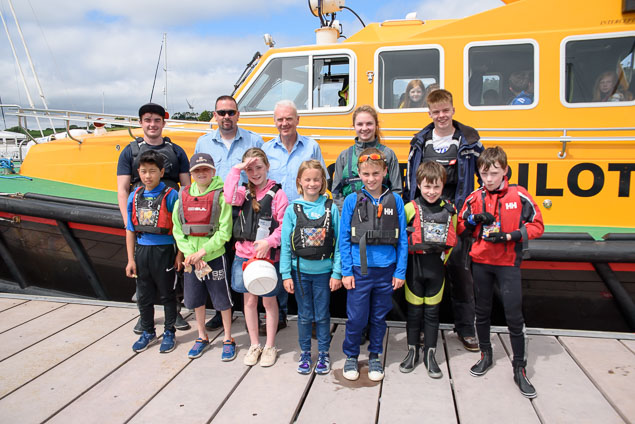
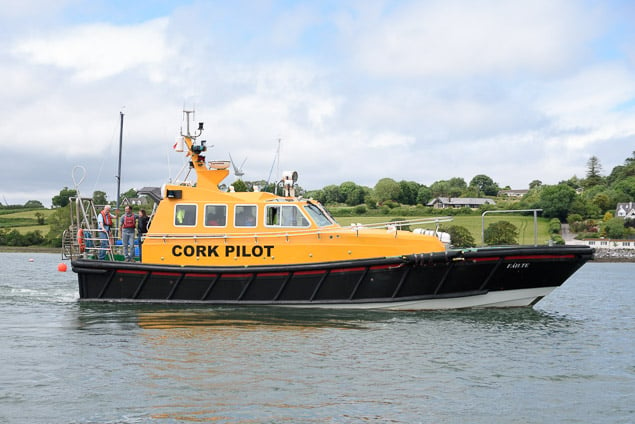
Dinghy Fest Photo Gallery at Royal Cork – Day One
The 2017 Dinghy Fest opened today at Royal Cork Yacht Club. A delayed start due to high winds saw 420s and RS200s race at 3pm.
Bob Bateman captured the Cork Harbour action.
Racing continues tomorrow
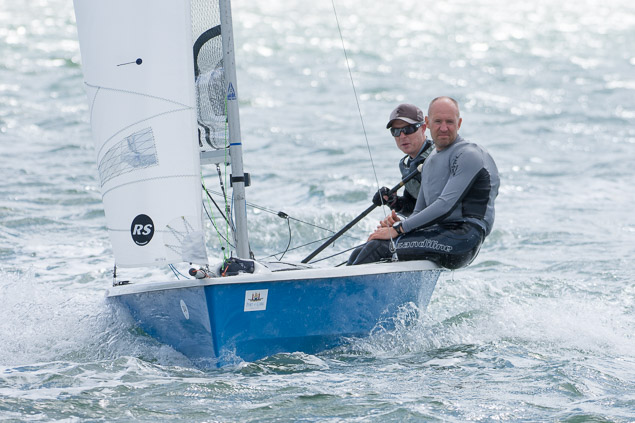
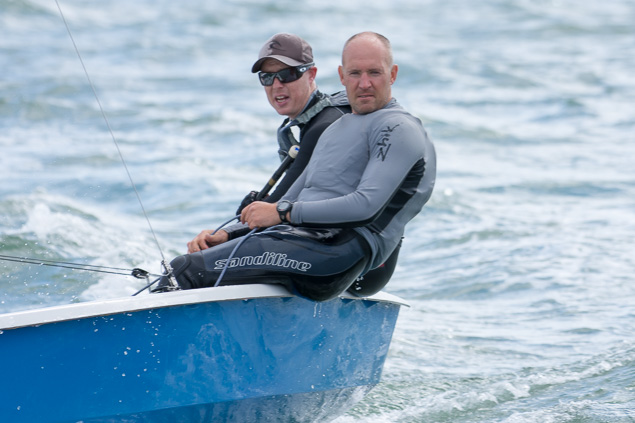
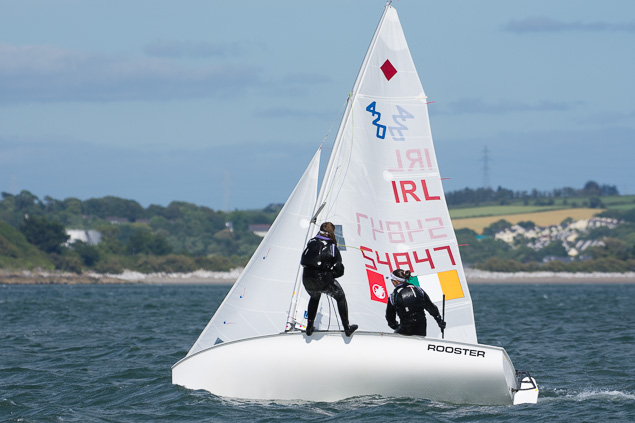
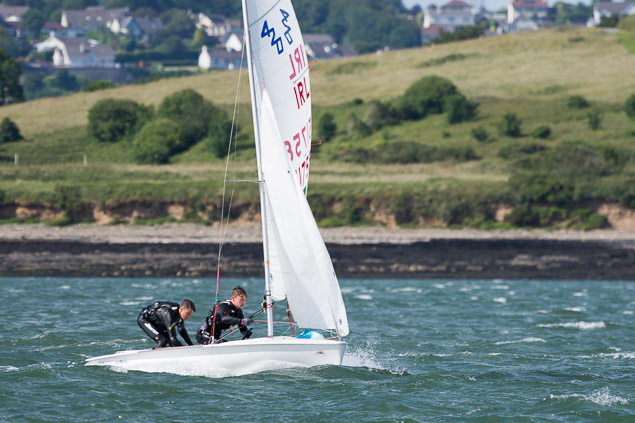
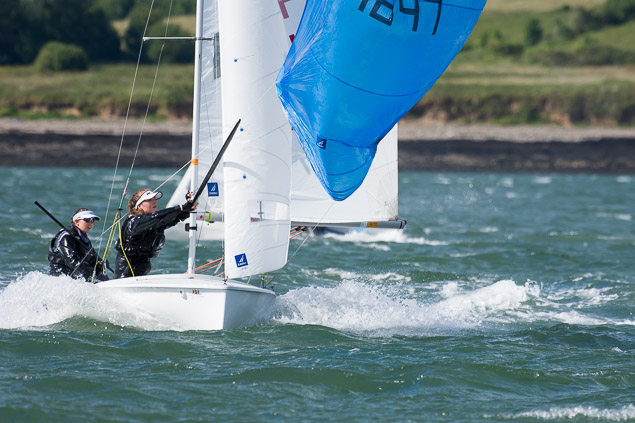
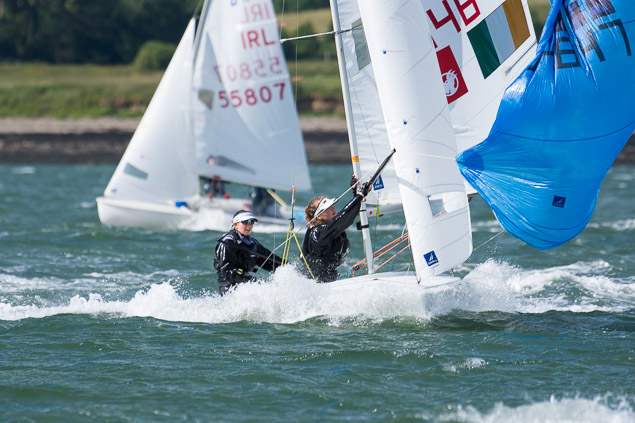
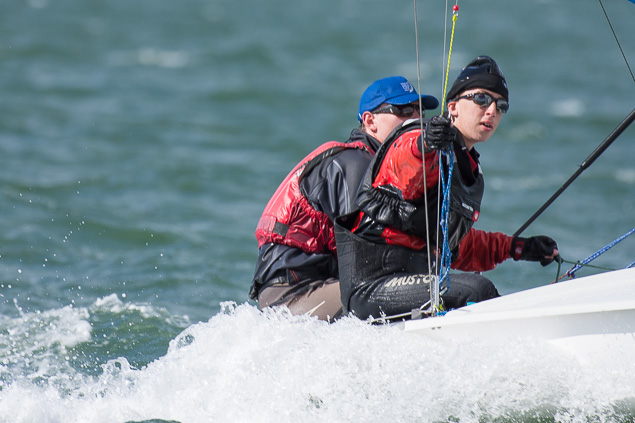
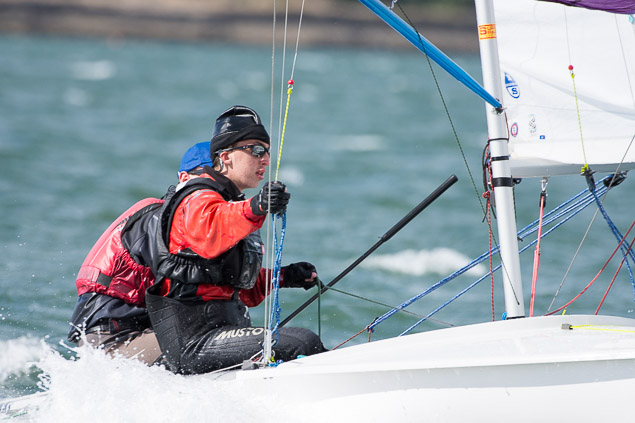
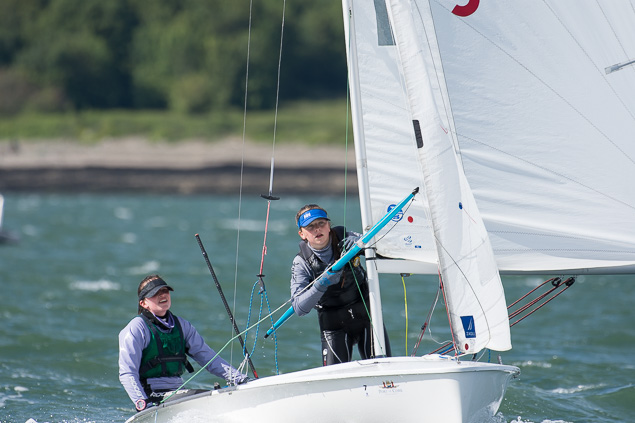
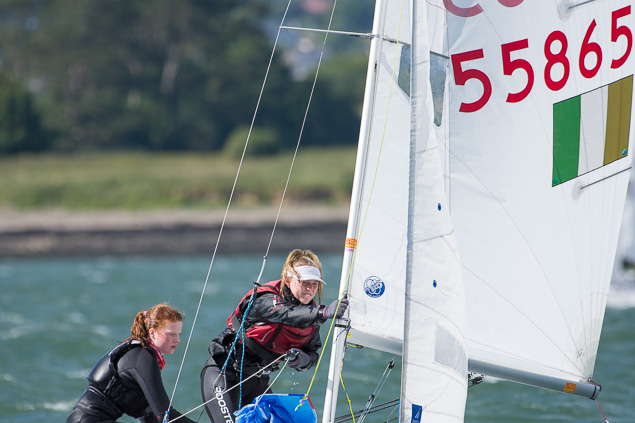
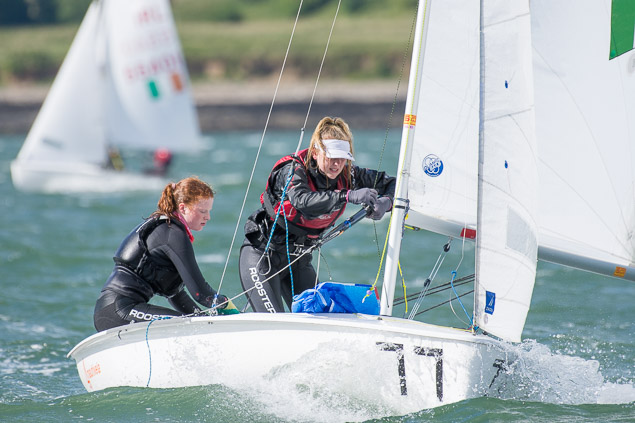
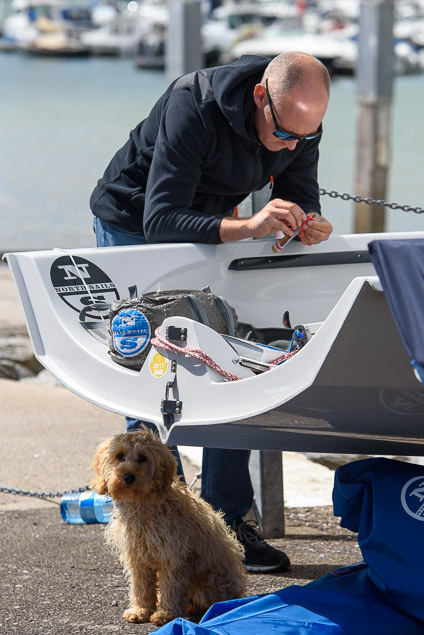
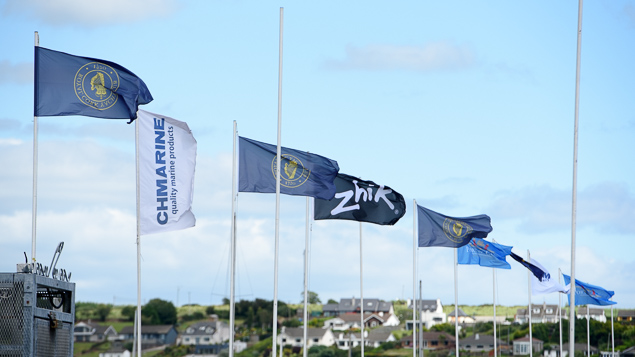
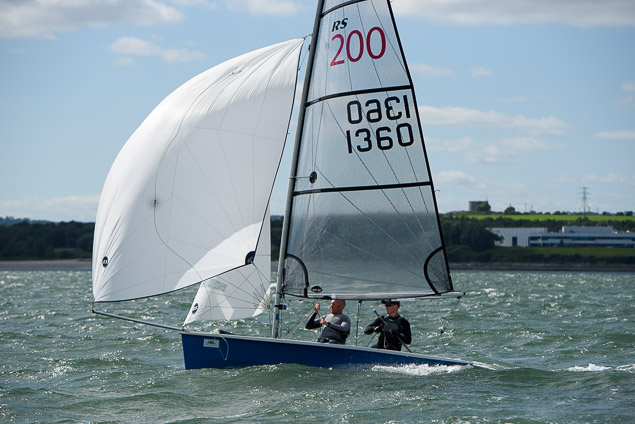
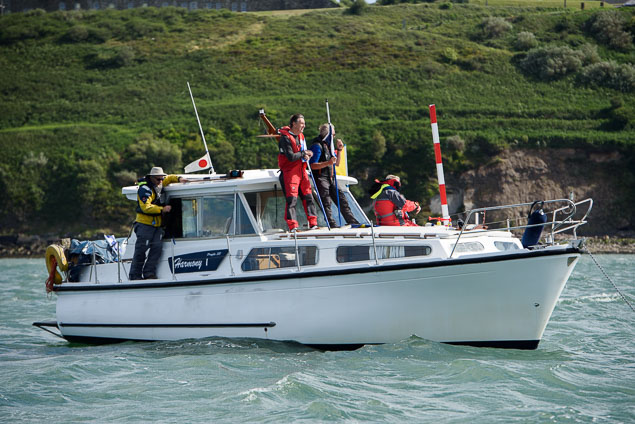
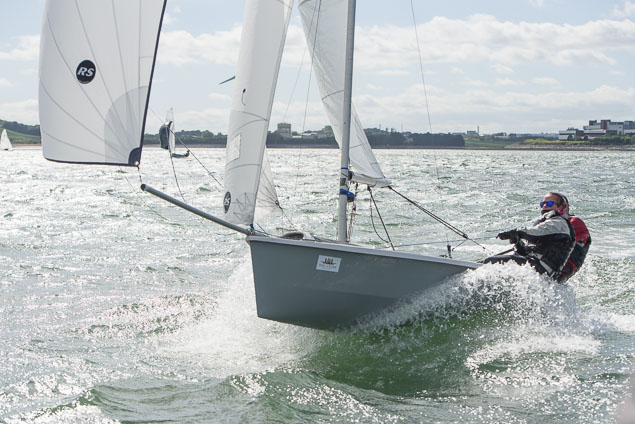
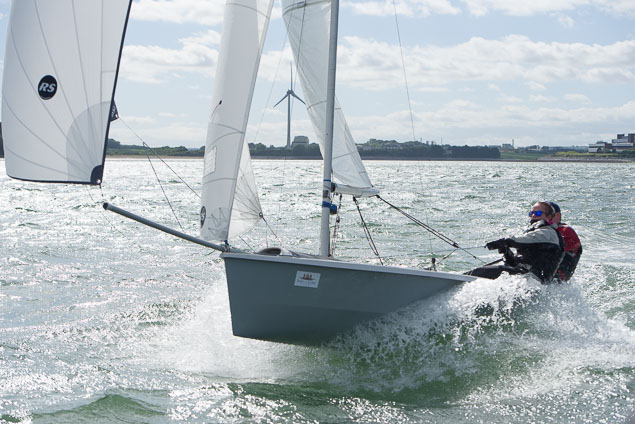
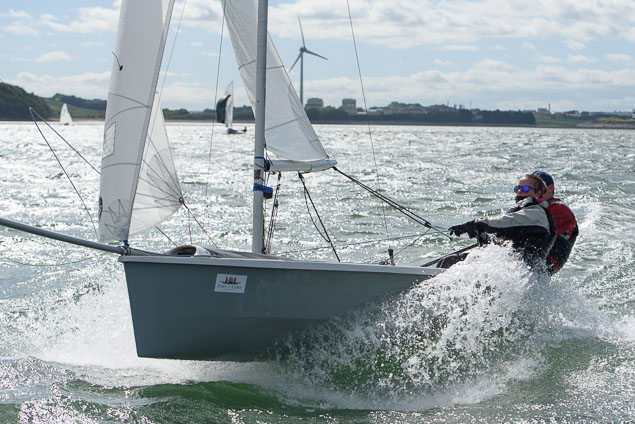
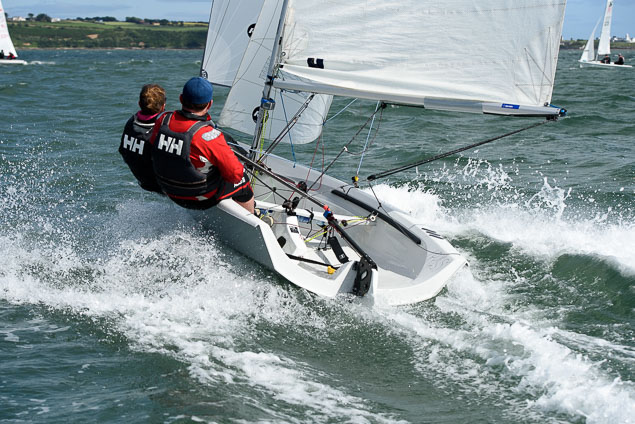
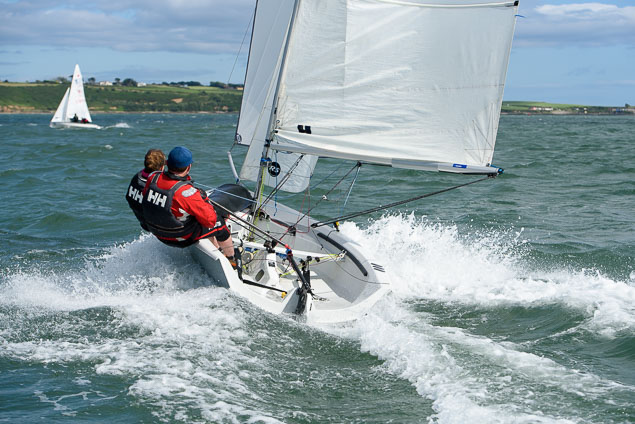
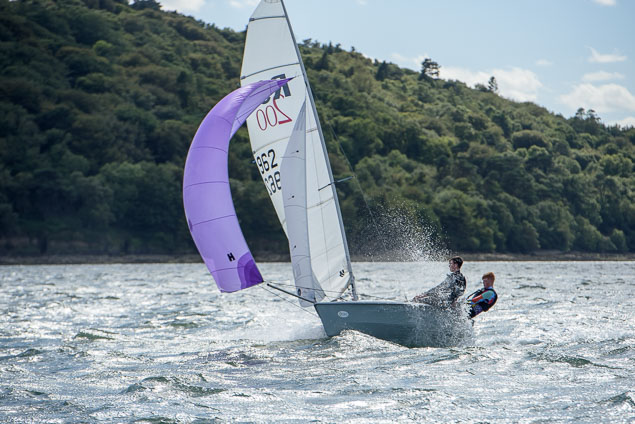
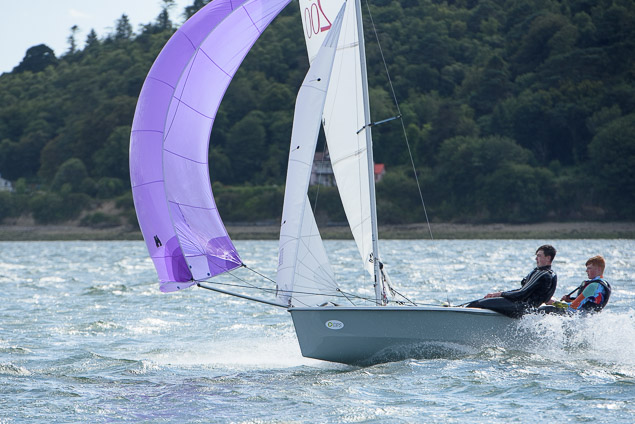
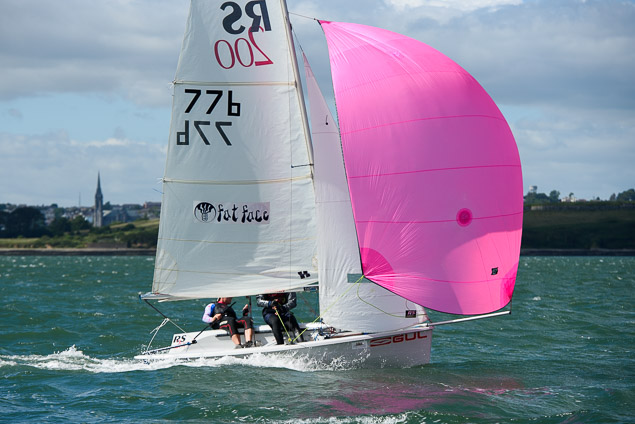
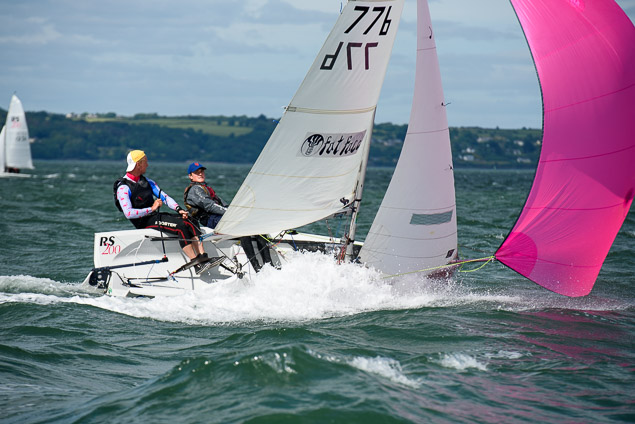
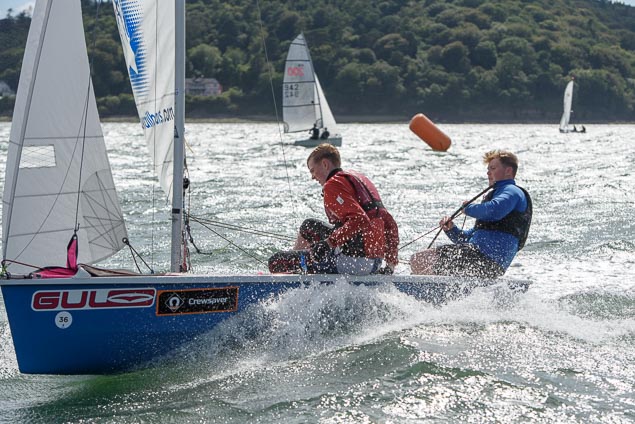
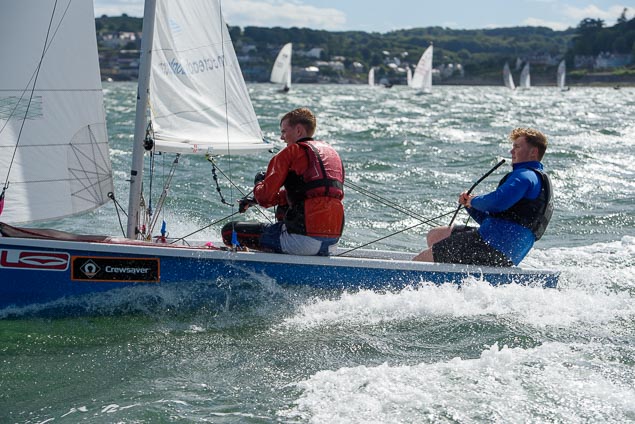
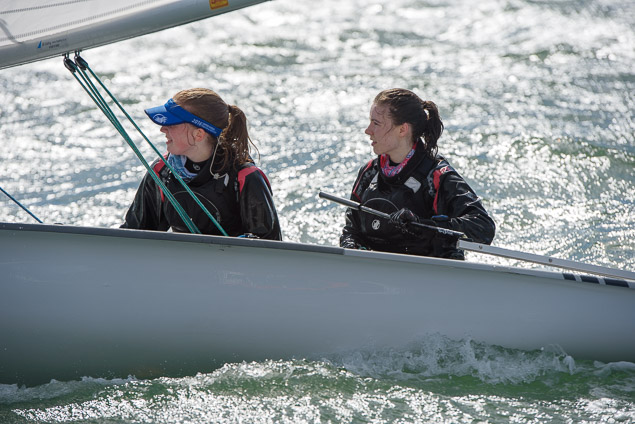
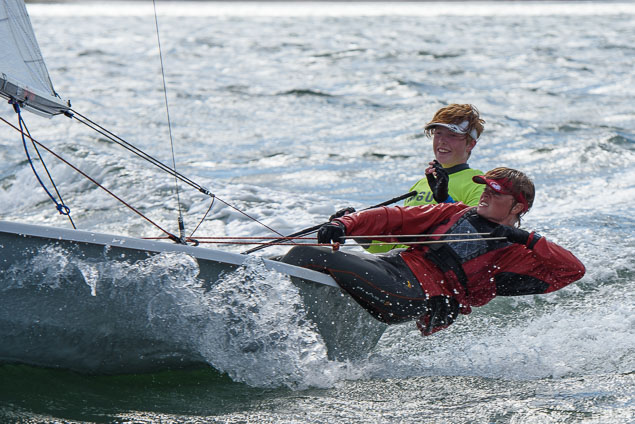
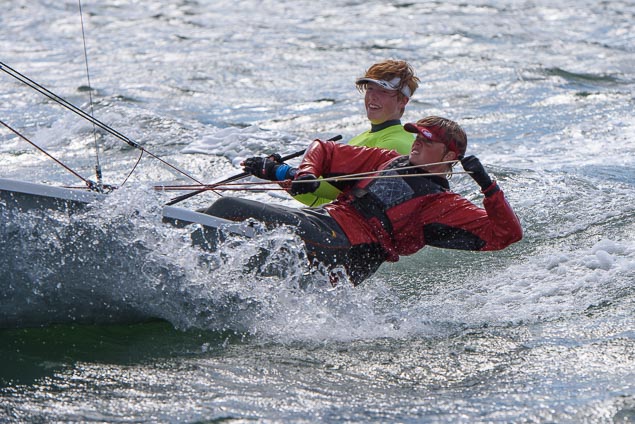
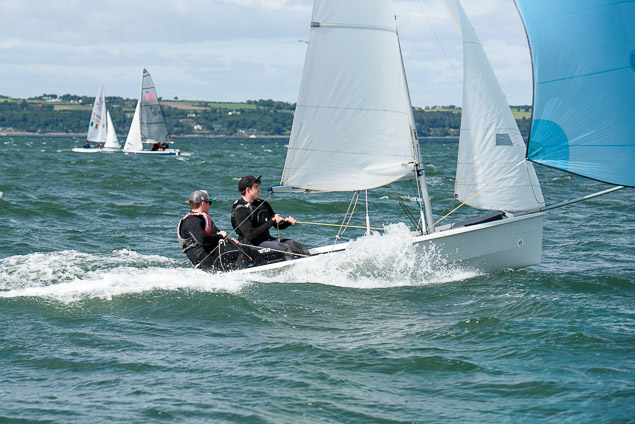
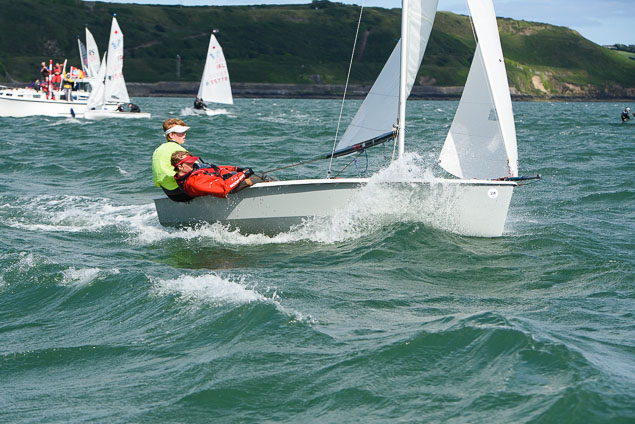
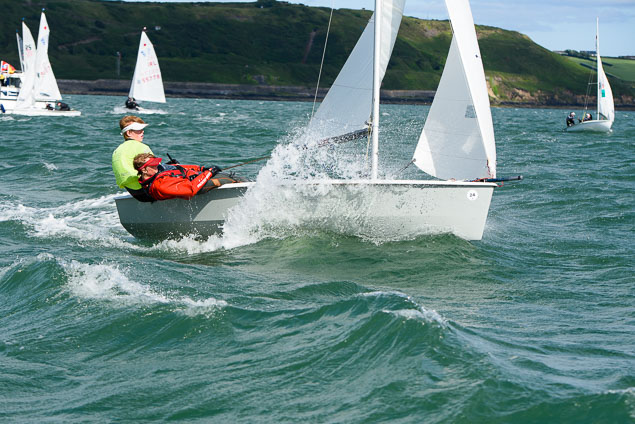
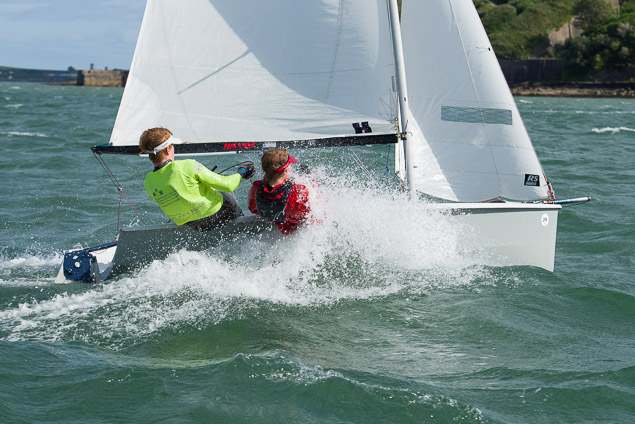
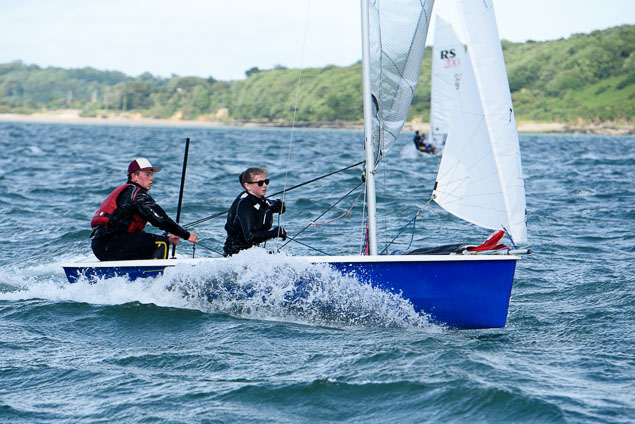
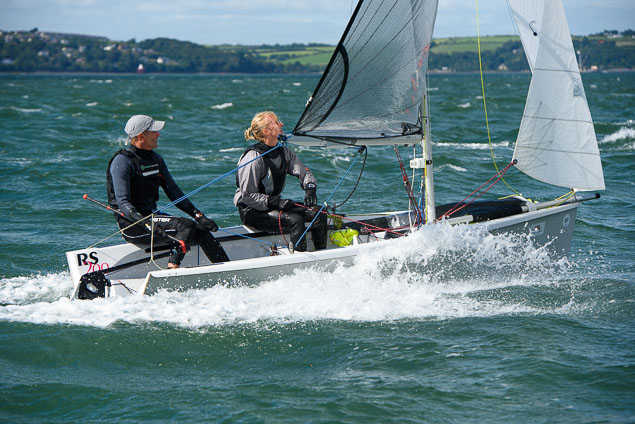
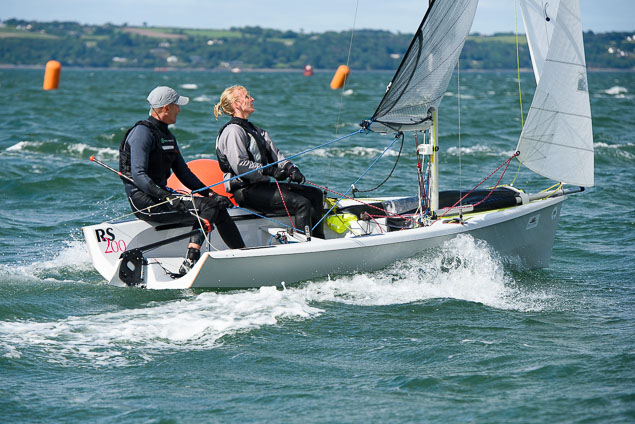
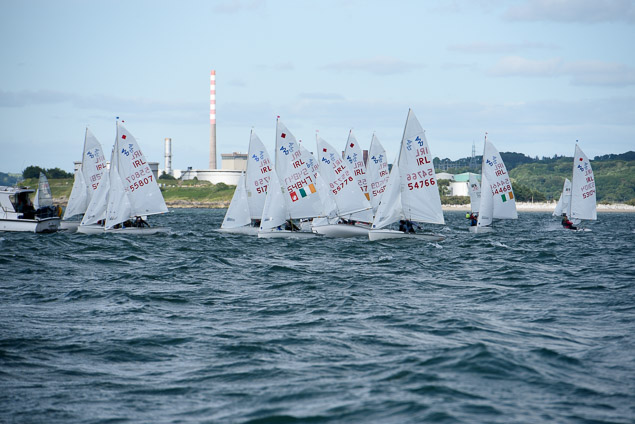
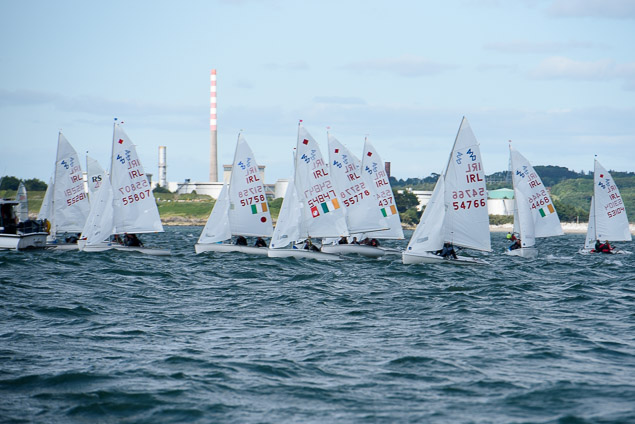
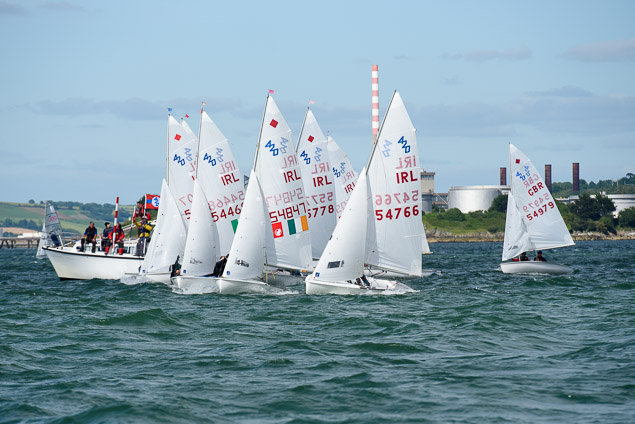
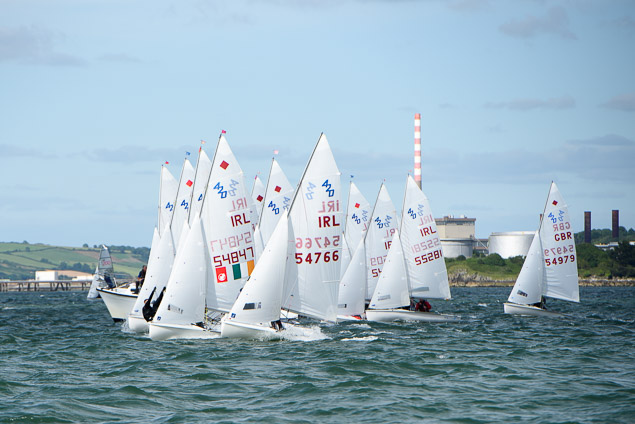
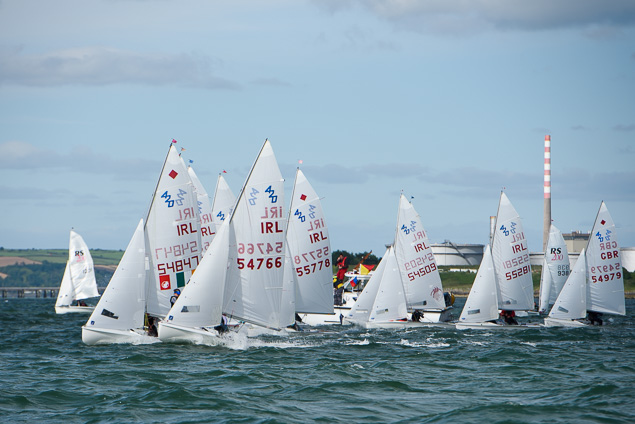
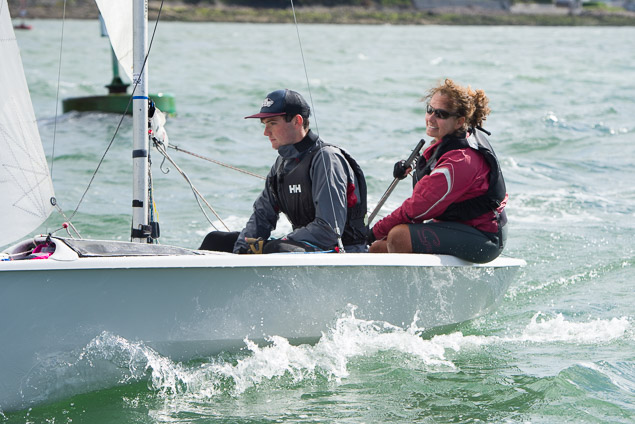
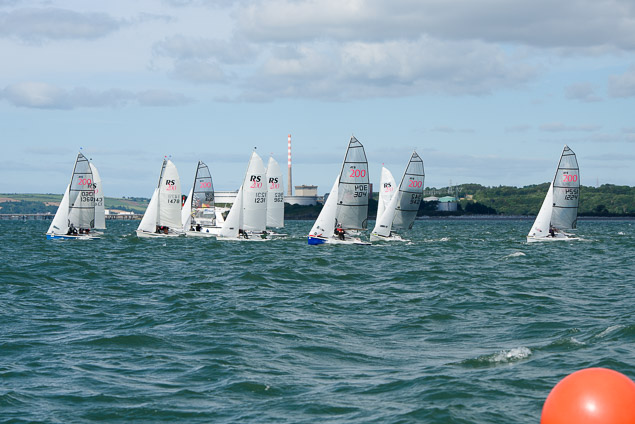
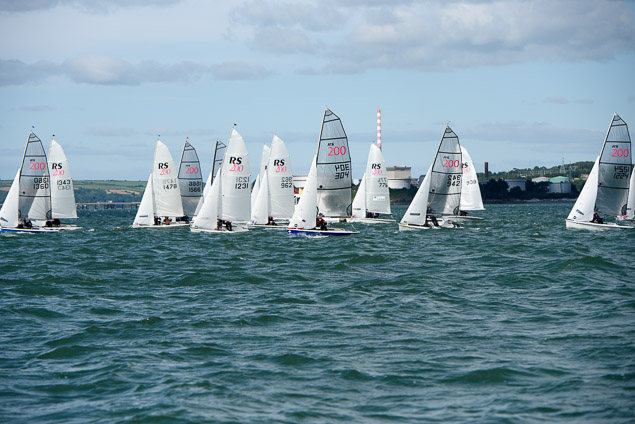
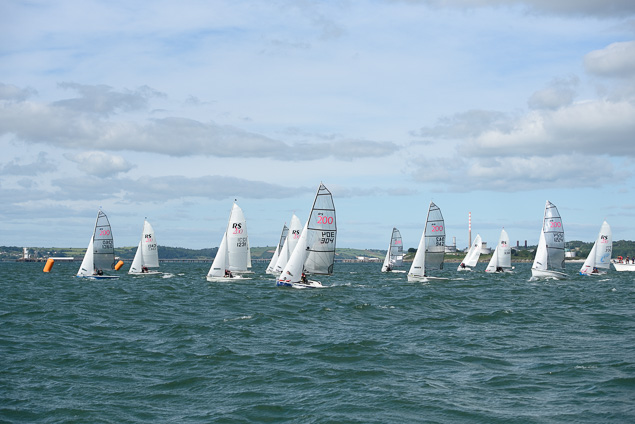
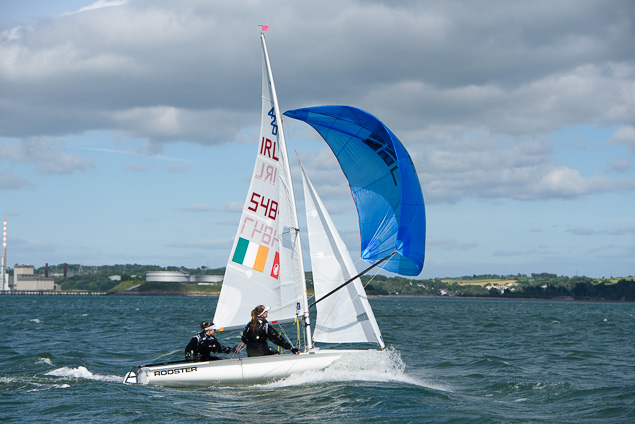
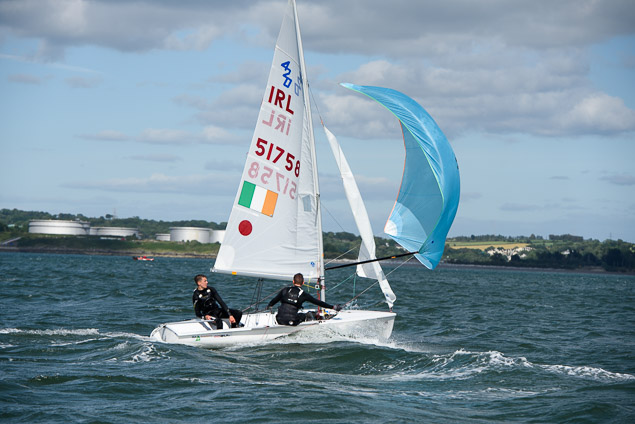
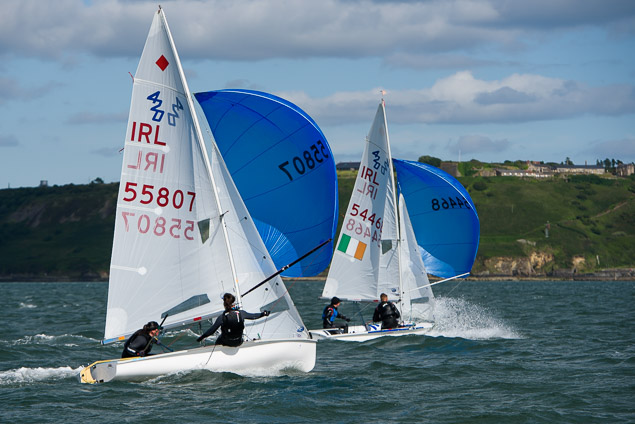
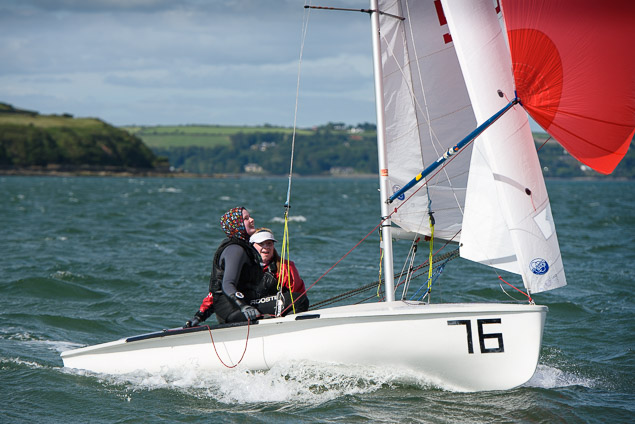
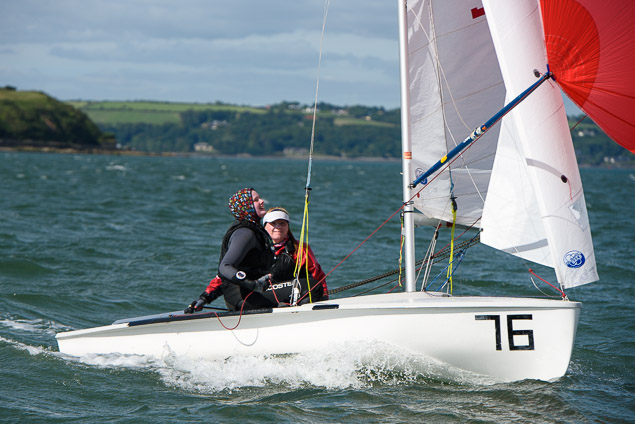
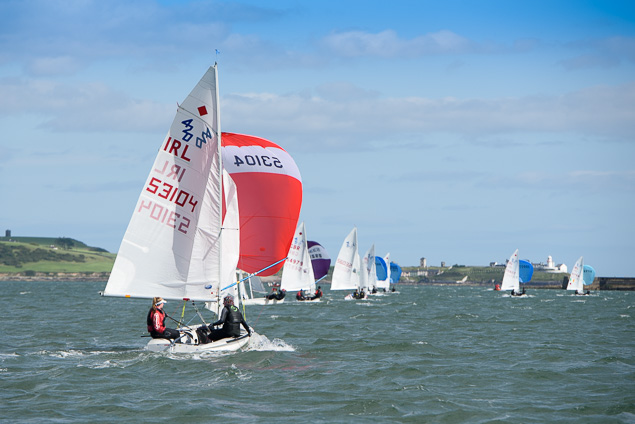
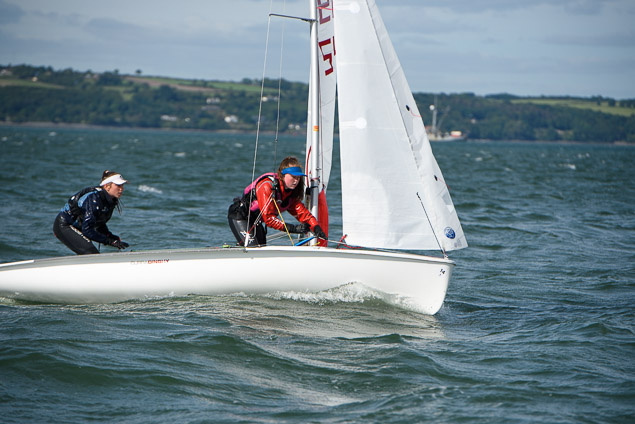
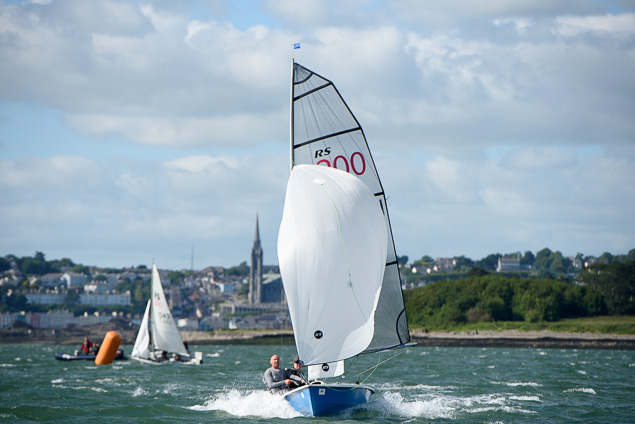
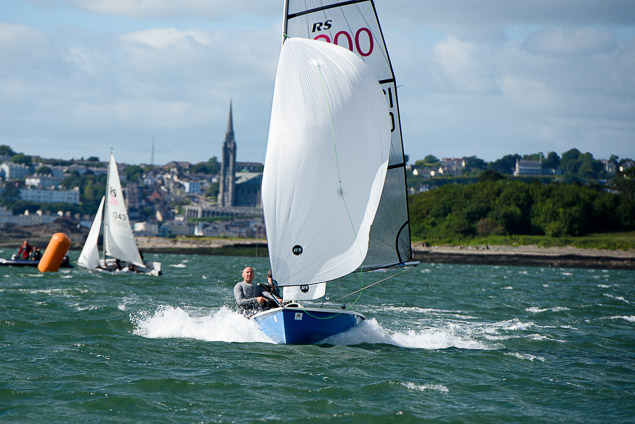
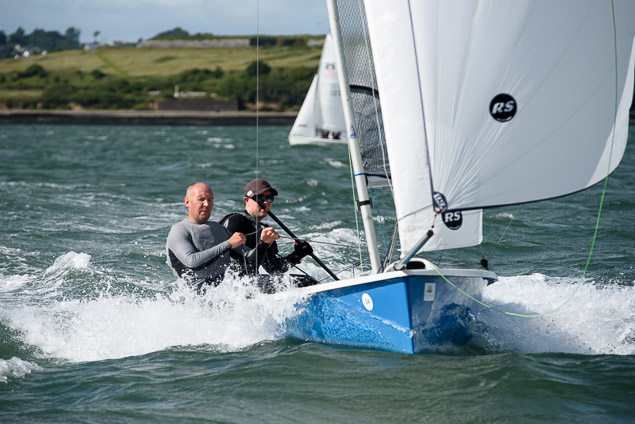
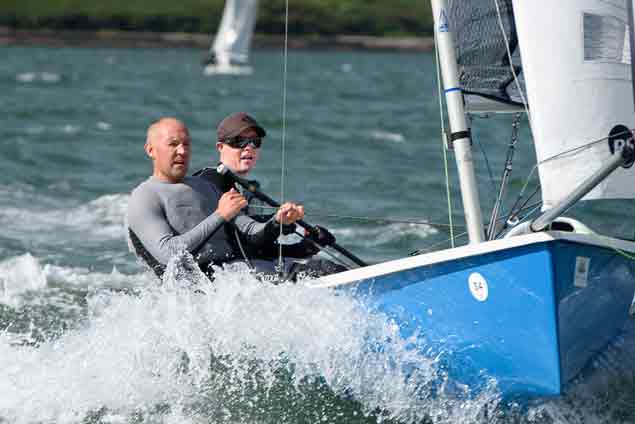
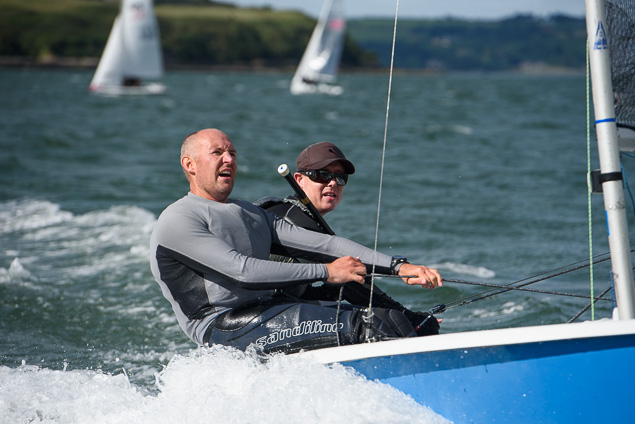
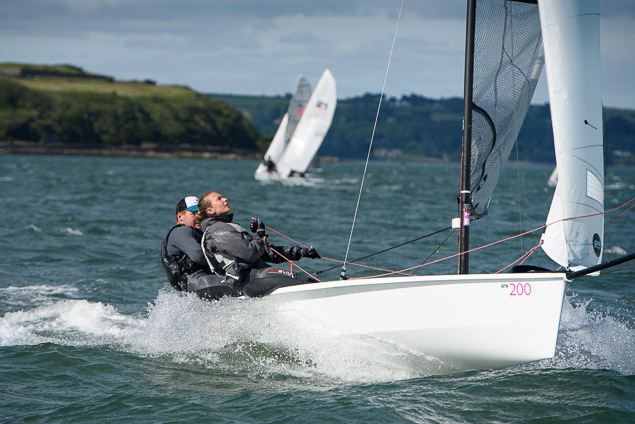
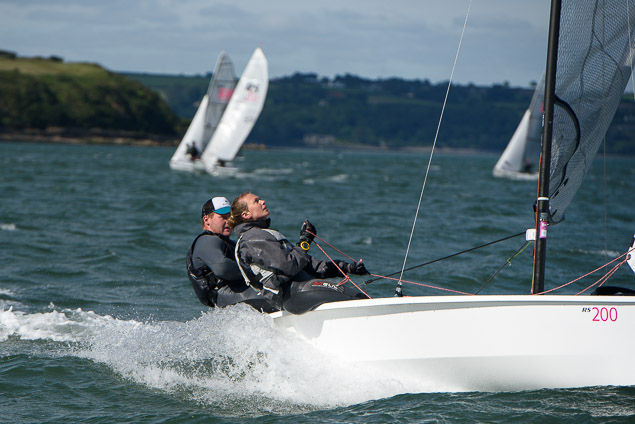
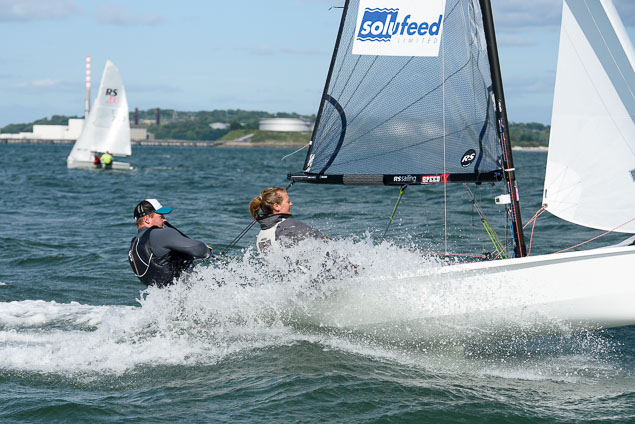
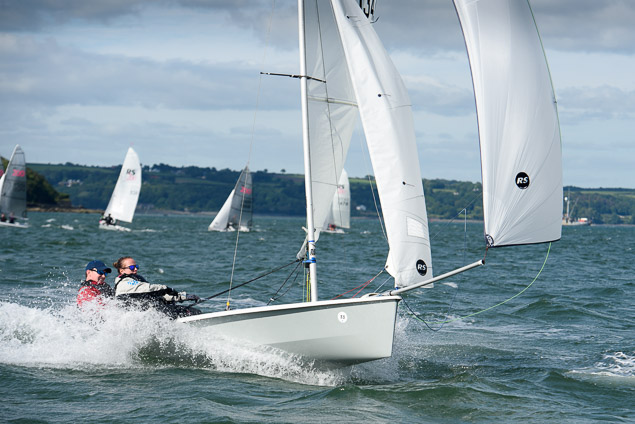
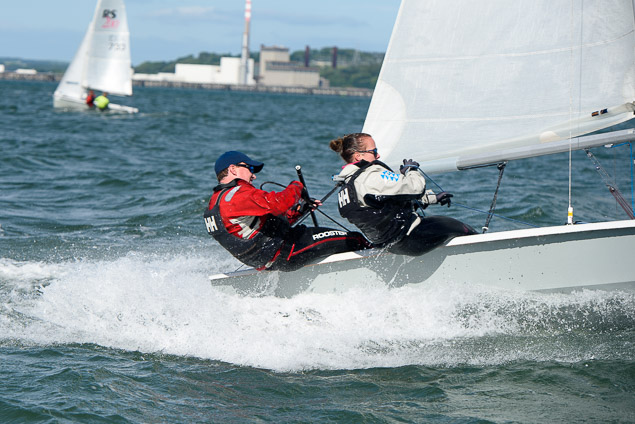
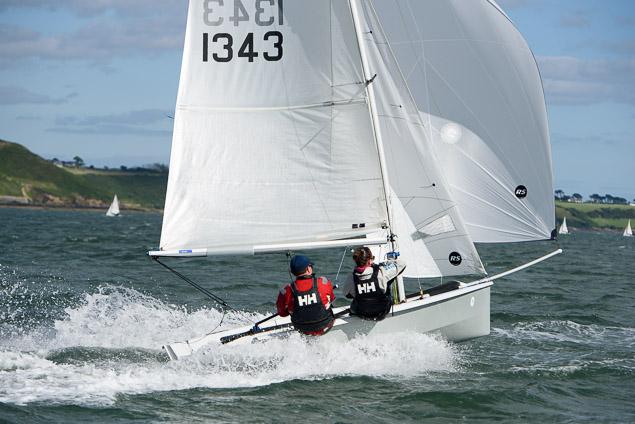
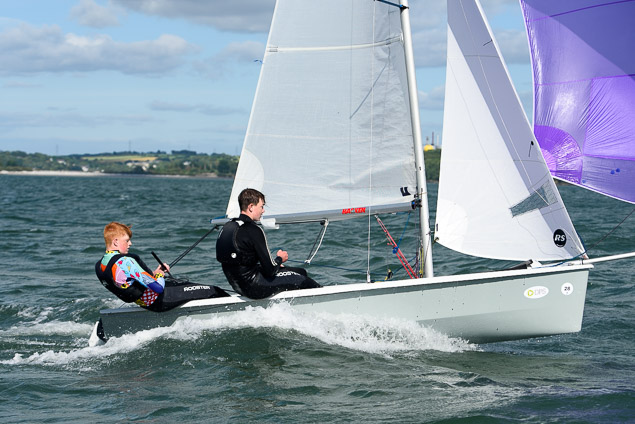
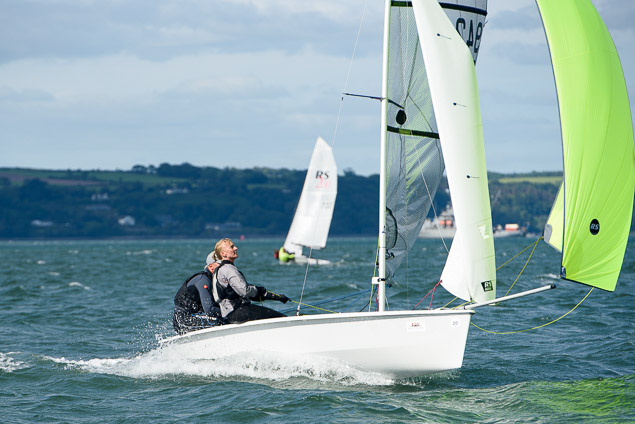
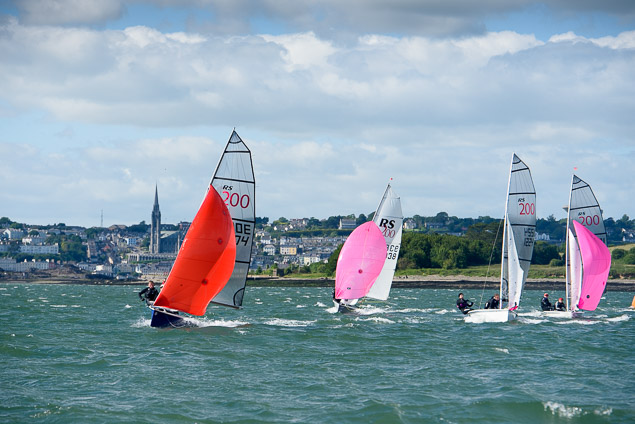
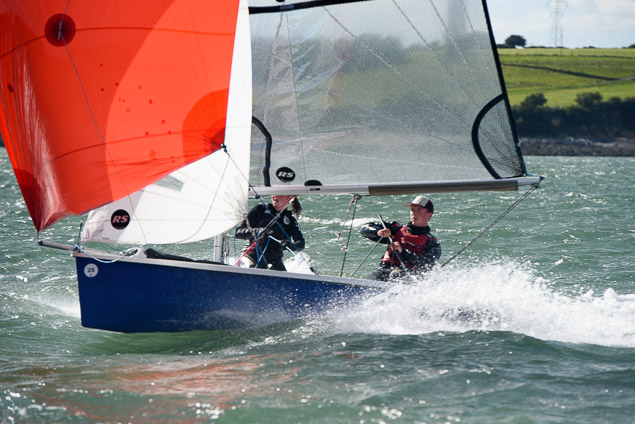
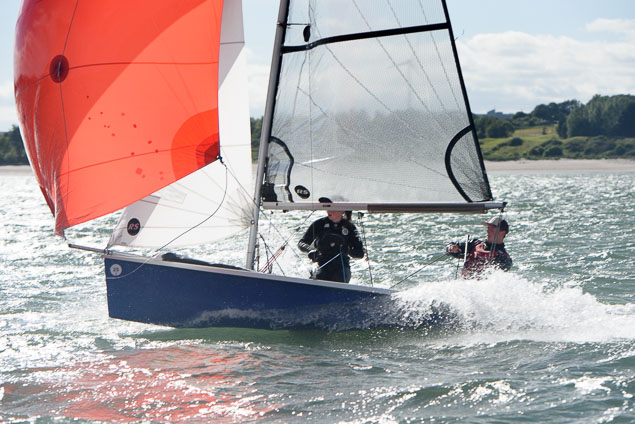
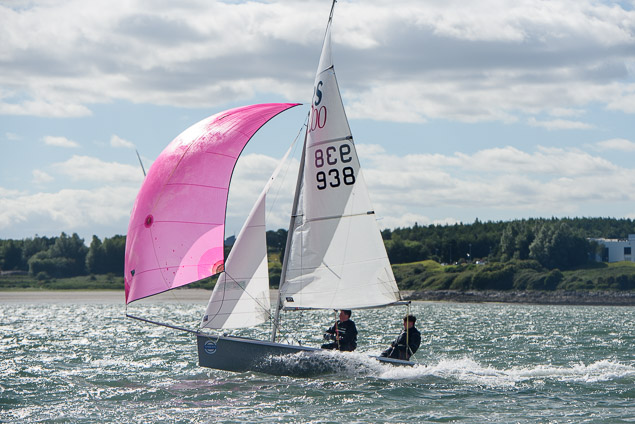
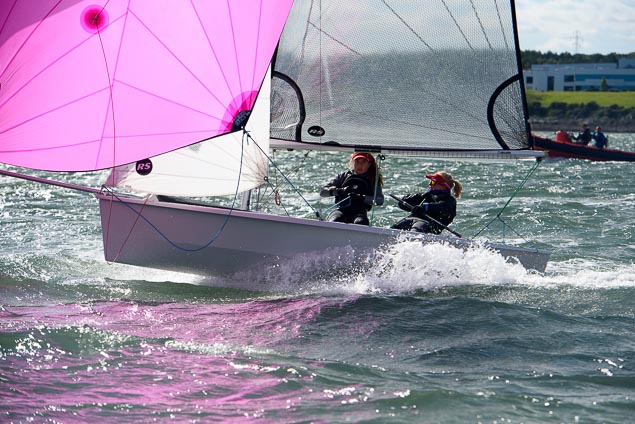
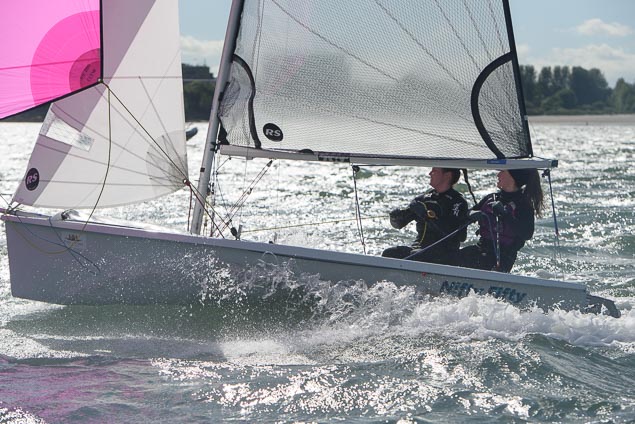
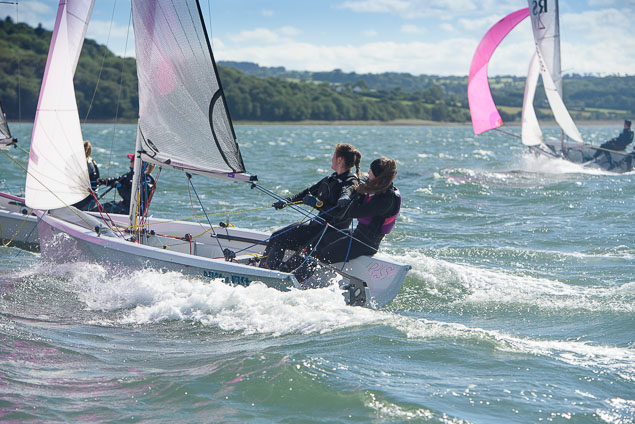
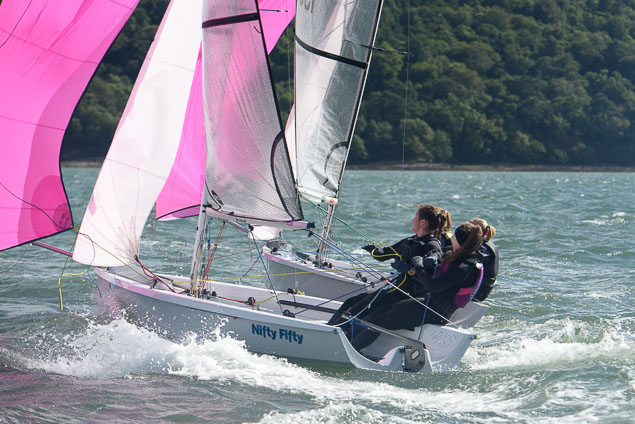
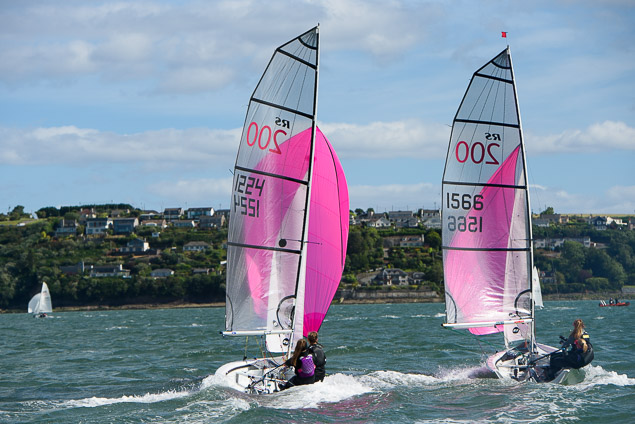
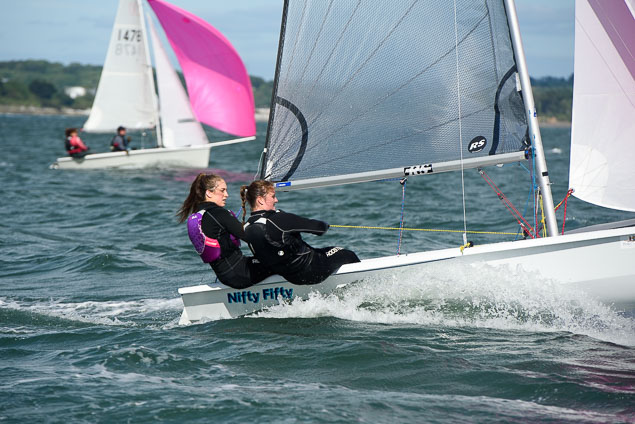
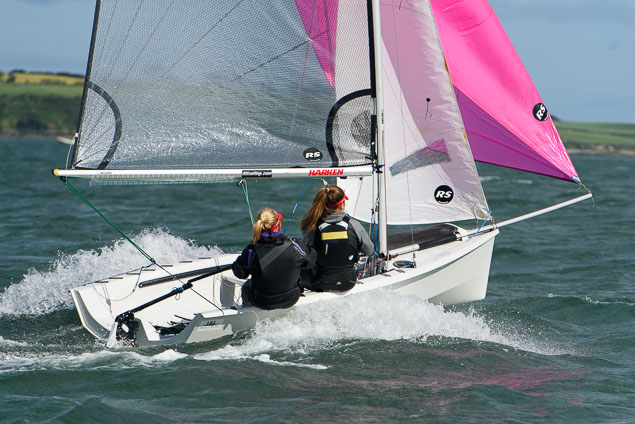
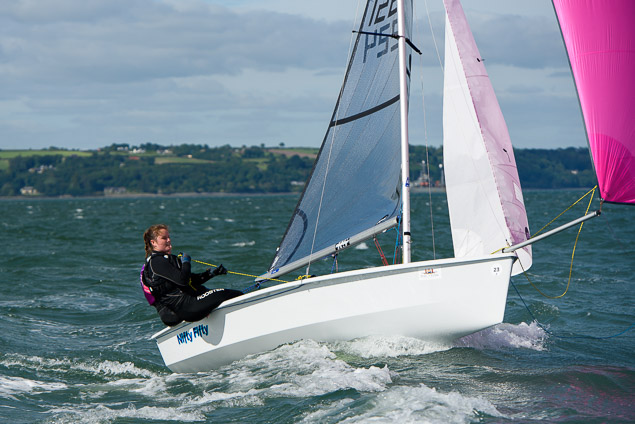
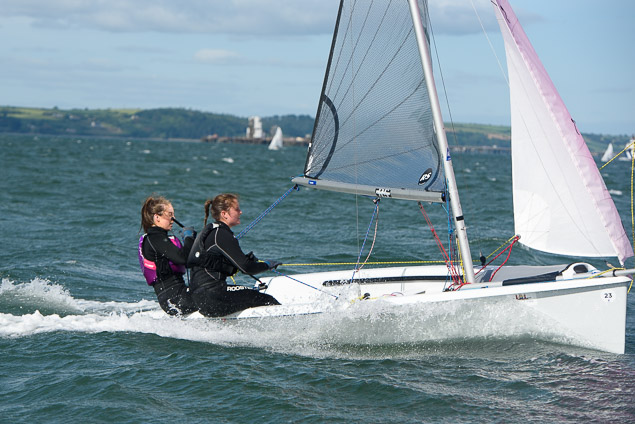
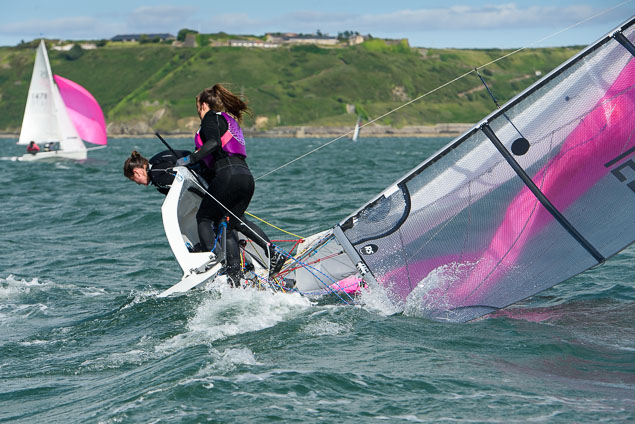
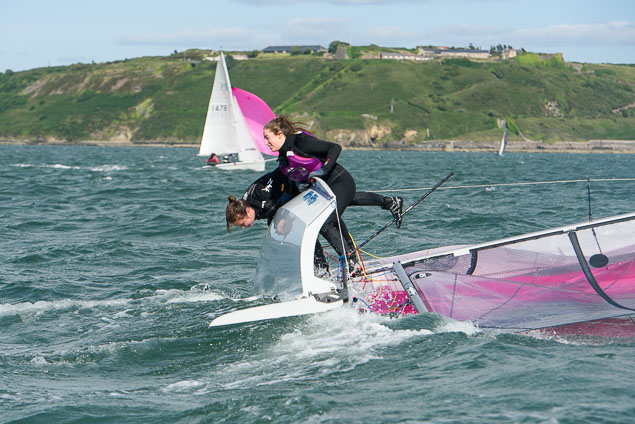
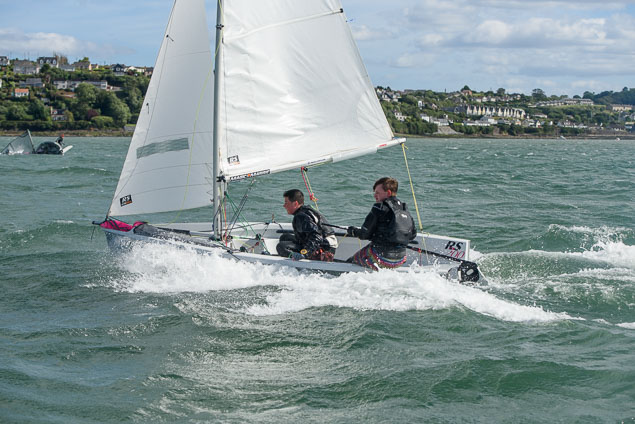
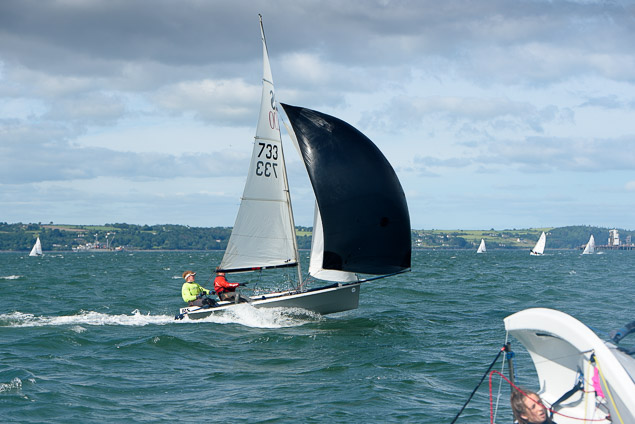
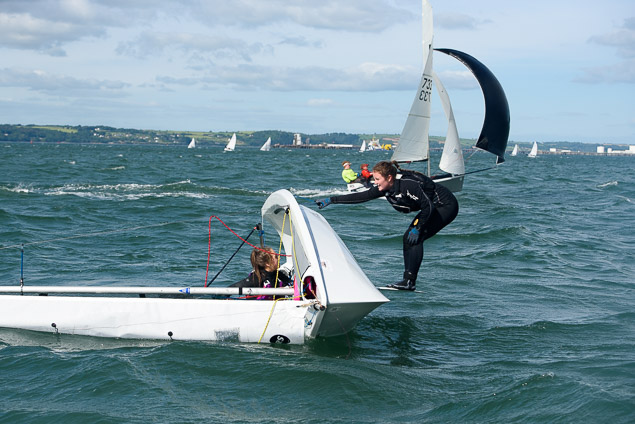
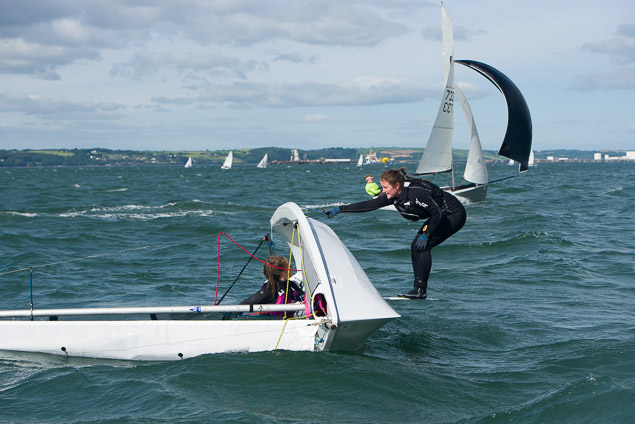
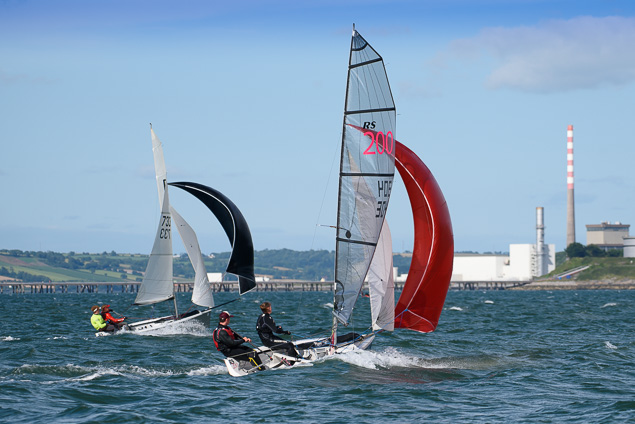
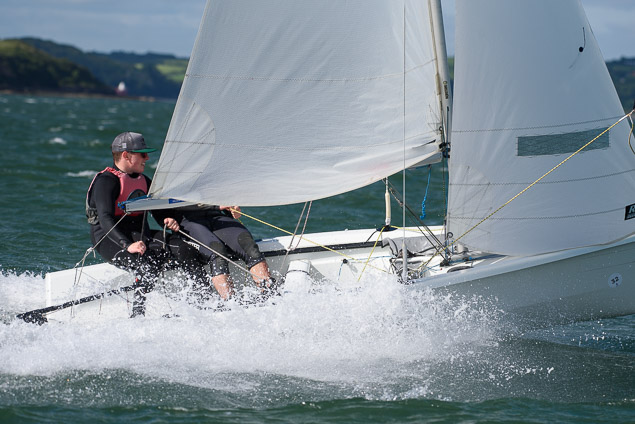
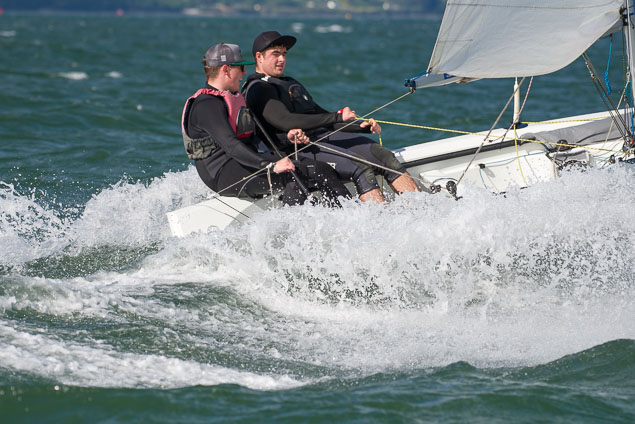
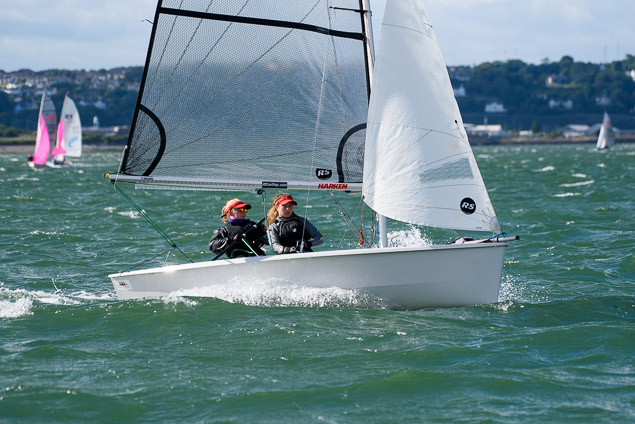
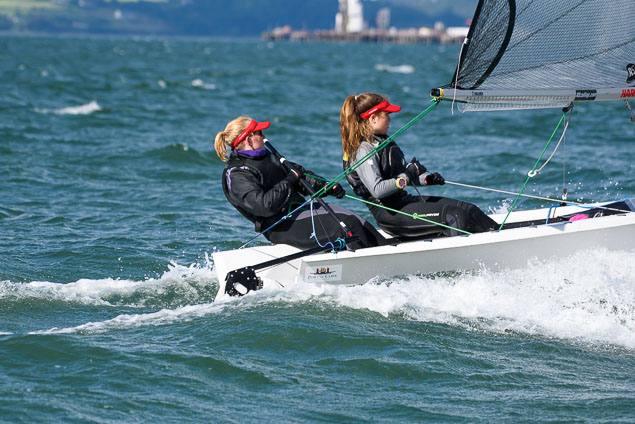
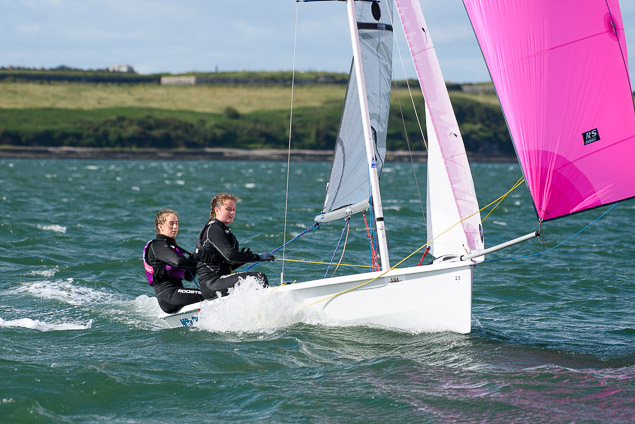
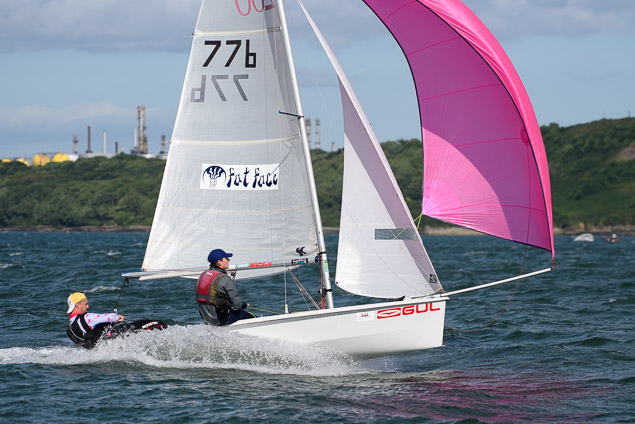
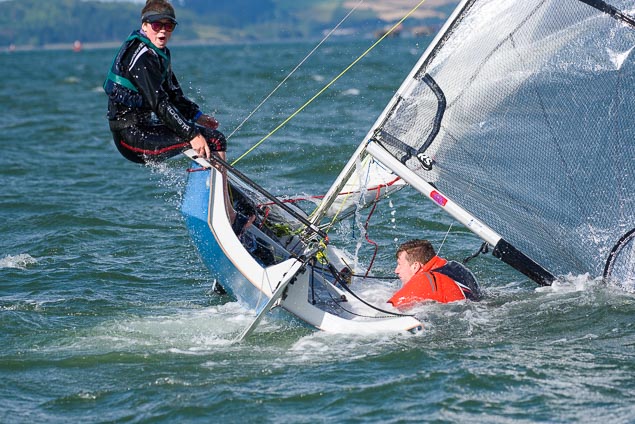
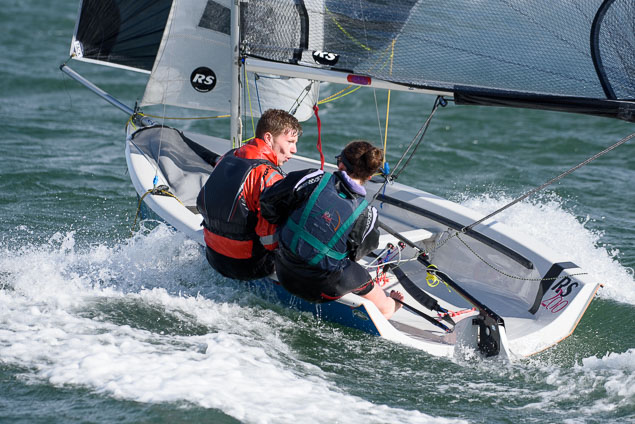
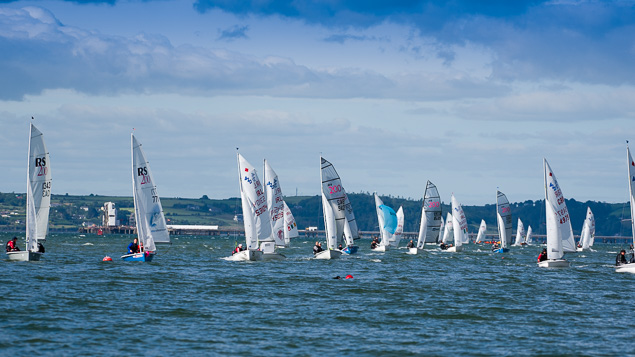
Royal Cork Dinghy Fest Attracts Multiple Championships for Weekend of Centreboard Action
Cork Harbour's own Alex Barry will be out to retain his southern title in the RS400 class as part of Royal Cork's Dinghyfest that starts tomorrow. It's one of a number of championships being staged as part of the Crosshaven initiative to foster dinghy sailing.
Barry, the current holder of the ISA's All Ireland Sailing title is also a keen National 18 sailor but campaigning his RS400 takes priority this weekend. The passionate centreboard sailor has spoken previously to Afloat.ie about plans to keep dinghy sailing alive. 'Friendships Through RS Sailing is the key to future of dinghy classes', the All Ireland Champ told Afloat.
Running as part of the weekend – that looks certain to attract over 100 boats – is the RS 200 Euro Cup & Irish National Championships, the National 18 National Championships, the RS Feva and RS 400 Southern Championships plus a PY fleet and an Optimist fun Fleet.
In the RS400, Ballyholme's Gareth Flanigan leads the challengers with Baltimore's top Laser sailor Fionn Lyden also entered in the double–hander.
There will be four course areas with two inside Roche’s Point at Cuskinny and the Curlane Banks while two more course areas will be in the outer harbour between Roche’s Point and Power Head.
The RS200 and the larger RS400 will sail together while the International 420s and the National 18s will be in the same group on an outer courses. The Irish 420 fleet is buoyed up by some international results scored last week at Kiel Regatta, Germany.
Prizes are provided by event sponsors CH Marine and their Zyck range of sailing gear.
Racing gets underway on Friday for the start of the national championships in the RS200 and 420 classes while the total DinghyFest will be afloat over the weekend including the foiling Moth class from 2.30pm on Saturday where John Chambers is also expected to debut his Waszp dinghy too.
Mirror Dinghy Revival – Podcast
My first experience of sailing a Mirror dinghy was not a good example of how to sail.
For £400 I became the proud owner of a brand new Mirror dinghy, made for me in Cork, a shining blue hull, lovely woodwork and crisp new sails, which crackled as the wind on the Sand Quay in Monkstown introduced them to the natural power that would move the new boat across Cork Harbour.
I negotiated the launching trolley down the slipway and she was bobbing in the water for the first time, ready to go. Monkstown Bay Sailing Club dinghy sailors, coming ashore from their Saturday morning league race, advised me that it was “brisk” in the Bay, where my previous sailing had been a club adult course in National 18s and crewing, prior to purchasing my first maritime steed.
My crew was my young son, Pat, adhering to his father’s wishes as youngsters do until they more sense and doubt the ability of the parent. We boarded and were off….A bit more quickly than I expected, as the strong wind coupled with the brand new sails in the power of Nature and within a short time my new Mirror was heading for an immoveable force – the Stand Road wall bounding the riverside in Monkstown.
Unfazed – at that stage – I leant out to balance the boat, but that natural power was stronger than human resource and there was a loud pop, followed by a second even louder as toe straps pulled out of the floor and, within seconds my lovely new Mirror had capsized and we were in the water --- wearing buoyancy aids, so swam around to the keel to get onto it and right the boat, only to find that tit was a bit of a distance above my head…..!!! Contemplating how to push Pat onto it, rescue arrived in the Monkstown Club’s rescue boat.
Wet and morale in shreds, we were helped to right the boat and towed ashore…
It didn’t dissuade either of us from sailing and later that same season we sailed the Mirror in the Cobh-Blackrock Race, 15 miles upriver in about two hours and had good experiences in the Mirror before moving on to other boats…. That happened to a lot of Mirror owners and the Class declined in Cork Harbour, but there has been a bit of revival, with quite a few mature sailors involved, at the Royal Cork, nicely in time for the holding there of the Mirror Class European Championships next week, from Tuesday, August 9 to Friday the 12th, sponsored by SafeTrx, who Apps provides a safety platform to enable boats as small as dinghies to be tracked and have access to weather alerts and maritime safety….
For this week’s Podcast I’ve been talking about that revival with Mel Collins, one of the Championships organisers and who holds a World Championship Mirror medal…
Mel Collins and the Mirror European Championships start on Tuesday next at the Royal Cork in Crosshaven and – we do have a Mirror back in our family……. The circle is complete…..
Dublin Bay Sailing Club Results for Sunday, 17 July 2016
Dublin Bay Sailing Club Results for 17 July 2016
IDRA 14 FOOT Race 1- 1. Dunmoanin (Frank Hamilton), 2. Sapphire (Lorcan O’Sullivan), 3. Dart (Pierre Long)
IDRA 14 FOOT Race 2- 1. Dunmoanin (Frank Hamilton), 2. Sapphire (Lorcan O’Sullivan), 3. Diane (B Murphy)
There are 158 Deputies in the Dáil, elected by the people of Ireland. The Naval Service is the maritime defence force. Just two of those Deputies have shown direct interest in the “strategic implications for the State” threatening the Navy which I identified in this Podcast three weeks ago. That is associated with the proposal to build a hazardous waste incinerator at Ringaskiddy in Cork Harbour, close to the Naval Base. I have Emailed every political party in the Oireachtas and the Independent members, asking for their views on those “strategic implications,” identified by the Department of Defence. Scroll down to listen to this week's podcast below.
Deputy Tommy Broughan, Independent T.D. for the Dublin Bay North Constituency is the only TD who replied to me personally. He raised the matter with the Minister of State who has special responsibility for defence matters.
Fianna Fail’s Press Office replied with a comment from their Leader Micheál Martin, the only other TD to respond to my queries. He said that “Fianna Fáil is opposed to the plan to construct an incinerator at Cork Harbour,” that he believes “the plan is fundamentally flawed” and that the “intervention by both the Irish Naval Service and Air Corps is significant. “ He said he included some of their concerns in his statement to the Bord Pleanala public hearing.
Excluding the Ceann Comhairle because of his position, why have the rest of the TDs in the Dáil, including Ministers, not expressed concern or raised for discussion in the national parliament, the issue identified by the Department of Defence as: “Haulbowline is the Naval Service’s only base in Ireland…..an important strategic location for the Irish Defence Forces, with aviation activities performed there, including marine counter terrorism, joint Naval Service/Air Corps exercises including simulated attack, cargo slinging for replenishment of ships at sea … and so on…. Restrictions on the Irish Air Corps’ ability to operate with the Naval Service at Haulbowline is not just a local issue, but carries strategic implications for the State….” That is what the Department of Defence said in their statement to the Bord Pleanala public hearing.
Surely such a statement merits national attention, but it seems that the national planning board, Bord Pleanala, not the elected representatives of the people in the national parliament, will decide on those “strategic implications for the State.”
What does this say about maritime interest or concern amongst the members of Dáil Eireann?
Minister of State with responsibility for defence matters Paul Kehoe’s reply to Deputy Broughan was: “Dear Tommy, I wish to acknowledge receipt of your recent e-mail correspondence regarding the Naval Base at Haulbowline, Cork. I will be in touch with you again soon in relation to this matter.”
I Emailed the following questions to Minister Kehoe at [email protected] because the Taoiseach assigned special responsibilities for Defence to Minister Kehoe.
1 - What is the Government's attitude to the defined threat to the Naval Service/Air Corps operations? 2- Is the Government prepared to accept that an industrial project can compromise Naval Service/Air Corps operations? 3 - Is it conceding to Bord Pleanala the right, through a planning application, to decide on the operations of the Naval Service/Air Corps?
Up to the time of this Podcast and despite a reminder sent yesterday to the Press Office, no reply. I also Emailed Minister Kehoe’s constituency office. No reply.
Sinn Fein’s Senator Pádraig MacLochlainn, formerly Spokesman on Defence, sent my query onto Aengus O'Snodaigh TD who is now the party’s Spokesperson on Defence. I Emailed Deputy O’Snodaigh myself. No reply.
The Labour Party undertook to make a reply when a Spokesman on Defence is appointed.
As I have said before, I live in Cork Harbour and, from my home see three wind turbines powering chemical factories close by, hear and at times smell the operations of some of these plants every day, plus the noise of operations at Cork Port’s Ringaskiddy Deepwater Terminal, so I am well used to the heavy industrialisation of the harbour. This issue, however, is about strategic national implications for the State. In the midst of all the discussion about drugs, drug trafficking and the resultant gang war in Dublin, the importance of the Naval role in drugs interdiction should not be forgotten.
When I interviewed the Managing Director of Indaver, which is proposing the incinerator, he spoke of “compromise” with the Navy and Air Corps and equated waste management as being an important concern for the State, as well as the Naval Service.
I disagreed with him on any such equation of the Naval Service and disagreed that the nation’s maritime defence force and the Air Corps should have to make any compromise with an industrial concern, irrespective of that concern’s self-perceived importance to the country in waste management terms.
However, it seems to me that the majority of TDs in the Dáil could show more concern about the day-to-day operations of the Air Corps and Naval Service.
I have never sailed a Laser. The 13ft. dinghy’s closeness to the surface of the water exposes the occupant without much protection to the elements. But I admire those who sail the boat. They are a hardy bunch to whom I have information to impart this week which may be useful to Laser sailors - a garden mat is a vital piece of equipment if you are sailing the boat for long periods!
That piece of advice was given to me by a Dublin sailor who is on the North/West coast of Ireland around Mayo/Donegal this week – on a Laser circumnavigation which he has been sailing for long hours each day since the middle of May. Scroll down the page to listen to the podcast.
Gary Sargent, who tells me that he is also known in the sailing world as ‘Ted,’ is from Clontarf Yacht and Boat Club on the capital’s seafront, a club where I have had the pleasure of meeting members a few times. Being on a Laser this is a solo circumnavigation of Ireland, which he started from Schull in West Cork and to where he hopes to get back by the end of this month.
I have admiration for those who undertake amazing, challenging tasks. I’m not sure I could do the same and definitely not on a Laser dinghy, being an open boat with a single sail, low on the water with little freeboard and so not a lot of comfort, which is where the garden mat comes in!
You can hear Gary explain why he has already used three of them on this week’s THIS ISLAND NATION Podcast below.
“One wild ride” around Ireland is how he, rather fittingly, describes his voyage which he says, shows that there is “more to the sport of sailing than just racing.” He is hoping to raise the profile of the sport to newcomers and that is appropriate as the ISA’s ‘Try Sailing Project’ and ICRA’S ‘Crew Point’ initiative gets rolling at clubs around the coast this Summer.
“I have taught adult sailing for the last twelve-to-fourteen years. There is a wonderful satisfaction in encouraging people who have not previously been involved in the sport, watching their faces light up with the enjoyment of being on the water when they realise that sailing is easy and enjoyable. Literally, their lives change when they get close to the water. This trip is highlighting sailing as a sport. There is a world of sailing out there, more than just racing. If we put fun back into sailing it will go a long, long way towards widening its appeal.”
I talked to Gary when he arrived in Belmullet, Co. Mayo. “I started in Schull to get the toughest part of the voyage, along the West Coast, over first. I have a lot of experience on the East Coast and appreciate that the North and South coasts can be difficult, but the vast expanse of the West Coast has been daunting,” he said.
Gary is accompanied by friends on a 9-metre rigid inflatable as safety boat and they spend each night ashore. The support he has received from coastal communities on his voyage has, he says, been “a revelation and a lesson in what community spirit means.”
“They have been wonderful. It is an indication of how special Ireland’s coastal communities are, how they have welcomed and supported us. It is something I will never forget.”
He is also fundraising on his voyage for ChildVision, the organisation which supports and teaches children suffering from sight loss and other profound disabilities to reach their full potential in life.
- Listen to Gary below
There is more to sailing than racing, such as enjoyment, fun, cruising and bringing people together to enjoy each other’s company and the boats they sail. When those boats are dinghies that have a proud history and which a dedicated group of enthusiasts is determined to protect and develop, there is something special about the boats, the people and their interest in sailing.
Next Sunday facets will be brought together when the Rankin dinghies gather at Whitepoint, a promontory near the Cork Harbour town of Cobh where the town’s sailing club has been active for many years.
The boats that will be the focal point at half-past ten on Sunday morning will be Rankins, a dinghy which was built in Cobh, of which it’s believed there were 80 and of which The Rankin Dinghy Group has traced nearly half, one with a unique name linking a historic gun boat that unusually fought both for and against the Irish and a man who crewed on it, on both sides! It’s an intriguing story.
Enthusiasts who preserve boats are special people as far as I am concerned and I admire them. They are single-minded and dedicated. That dedication can come from admiration of a particular type of boat, of the man or men who built it, how it performs and often because they have been involved with the class of boat themselves and are seeking to avoid its decline and restore it to appreciation by more people.
The name of the Rankin dinghies is revered in Cork Harbour and particularly in the harbourside town of Cobh. And the name of one of those boats links the gunboat which fought against the Irish Volunteers during the 1916 Easter Rising and later for the emergent Irish Free State Government against anti-Treaty Forces during the Irish Civil War. It also links the renowned boat-building Rankin family in Cobh, one of whose members crewed on the gunboat.
Listen to the Podcast below in which I talk to two dedicated sailing enthusiasts, Maurice Kidney and Conor English, who are driving the restoration of the Rankin dinghies in Cork Harbour. They have discovered that Rankins were bought and sailed in several parts of the country.
You will hear how the name of the gunboat which shelled Liberty Hall during the Easter Rising of 1916, Helga, is maintained on a dinghy in Cork Harbour. How that gunboat, having fought against the Irish Volunteers, later fought for the emergent Irish Free State and became the first Irish fisheries protection vessel, Muirchu.
It’s a fascinating story about a special type of boat that The Rankin Dinghy Group is reviving. Having traced half the 80 boats which were built, the Group is asking anybody with information on the whereabouts of Rankin boats in any condition to contact Maurice Kidney on phone 086 3225424 or Conor English on phone 086 3531122.
• Listen to Podcast below. An article on the Rankins by Tom MacSweeney will also appear in Summer Afloat magazine
See a slideshow on the Rankin dinghy here
Two people were rescued from the water earlier this evening in Killyleagh, Strangford Lough, Northern Ireland after falling overboard from a dinghy.
A member of the public made a 999 call to the UK Coastguard at 7.00pm to report that they could hear shouts for help coming from the water at Killyleagh. Portaferry Coastguard Rescue Team and the Portaferry RNLI Lifeboat made their way to the incident.
Only minutes before the RNLI arrived, the Killyleagh Yacht Club Rescue boat reached the scene and found two people in the water. One person had fallen from the dinghy and was found clinging to the stern of moored vessel and the other person was clinging to a dinghy that was drifting out to sea.
The two casualties were taken to the Killyleagh Yacht Club, where one was treated for hypothermia by the Northern Ireland Ambulance Service.
Donaghdee's Oisin McClleland Crashes Through Palma Waves
Northern Ireland sailor Oisin McClleland makes a splash on the cover of the latest Finn newsletter. The Donaghdee dinghy helmsman is aiming for the 2020 Olympics in Tokyo and has been part of a crowd–funded campaign to introduce more nations to the heavyweight Olympic dinghy. In its opening photo by Robert Deaves this morning, McClleland crashes through a wave in Palma at the Trofeo Princesa Sofia Regatta.
Meanwhile, the Finn Class line up for the 2016 Olympic Games is nearly complete. There will be on Irish representation for 2016. Ireland's last Olympic representation in the class was David Burrows in 2004 in Athens and Timothy Goodbody in Qingdao 2008.
The country qualifiers are over and now it is about national selection and taking up of places.
GBR, CRO, FRA, NZL, USA, NOR, SWE, DEN, SLO, AUS, HUN and FIN qualified in Santander in 2014. NED, GRE, EST and URU qualified in Takapuna 2015. ITA qualified from the Takapuna result as there was no new Oceania nation present in Melbourne. CHN qualified from the Asian qualifier in Qingdao. ARG and CAN qualified for the continential places for North and South America at the Sailing World Cup Miami in January. Finally at the last continental qualifier in Palma, TUR won the European place and SEY won the African place. A lot of battles along the way but 23 nations with a ticket to Rio.


























